Search Result
Results for "
cell viability
" in MedChemExpress (MCE) Product Catalog:
8
Biochemical Assay Reagents
| Cat. No. |
Product Name |
Target |
Research Areas |
Chemical Structure |
-
- HY-D0163
-
|
|
DNA Stain
|
Others
|
|
Methyl Green is a potent fluorescent dye. Methyl Green is a DNA stains of cells and electrophoretic gels. Methyl Green can be used as a stain for direct measuring of viability by both microscopy and flow cytometry, with peaks at 633 and 677 nm .
|
-

-
- HY-D0950A
-
|
|
DNA Stain
|
Others
|
|
Methyl Green zinc chloride is a potent fluorescent dye. Methyl Green zinc chloride is a DNA stains of cells and electrophoretic gels. Methyl Green zinc chloride can be used as direct measuring of viability by both microscopy and flow cytometry, with peaks at 633 and 677 nm .
|
-

-
- HY-N10131
-
|
(+)-Biatractylolide
|
Apoptosis
|
Neurological Disease
Cancer
|
|
Biatractylolide is a compound isolated from the ethyl acetate extract of Atractylodes macrocephala. Biatractylolide has antitumor and antioxidant activities. Biatractylolide improves cell viability, inhibits the apoptosis of cells induced by glutamate, and reduces the activity of LDH. Biatractylolide has neuroprotective effects .
|
-

-
- HY-118540
-
|
Diazoresorcinol
|
Fluorescent Dye
|
Others
|
|
Resazurin (Diazoresorcinol) is a water-soluble, non-toxic, stable, membrane-permeable blue non-fluorescent dye (faintly fluorescent). Resazurin is used as a redox indicator, can be reduced to pink, highly fluorescent Resorufin (Ex=530-560 nm, Em=590 nm) in living cells. Resazurin can be used for the detection of cell viability, toxicity, proliferation, migration and invasion in cells (human, plant and animal, bacterial and fungal) .
|
-

-
- HY-143461
-
|
|
Casein Kinase
|
Cancer
|
|
CK2 inhibitor 3 is a potent CK2 inhibitor with IC50 value of 280 nM. CK2 inhibitor 3 inhibits endocellular CK2, significantly affects viability of tumour cells and shows remarkable selectivity on a panel of 320 kinases .
|
-
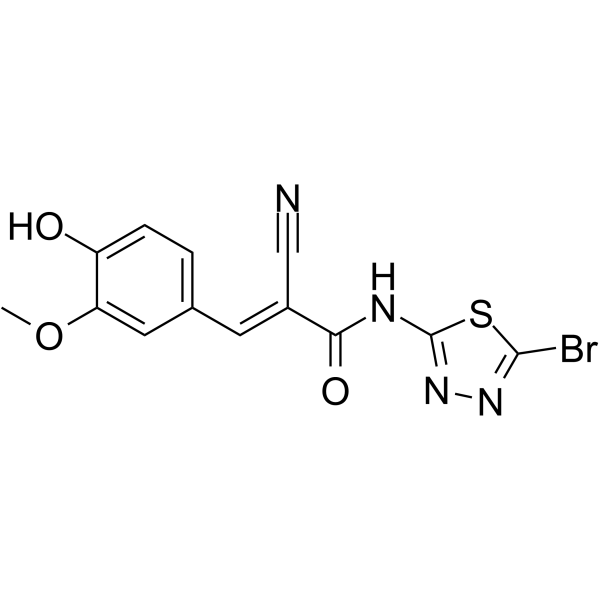
-
- HY-120046
-
|
|
HDAC
|
Cancer
|
|
YF479 is a potent inhibitor of histone deacetylase. YF479 abates cell viability, suppresses colony formation and tumor cell motility. YF479 significantly inhibits breast tumor growth and metastasis. YF479 has the potential for the research of clinical trials for breast cancer .
|
-
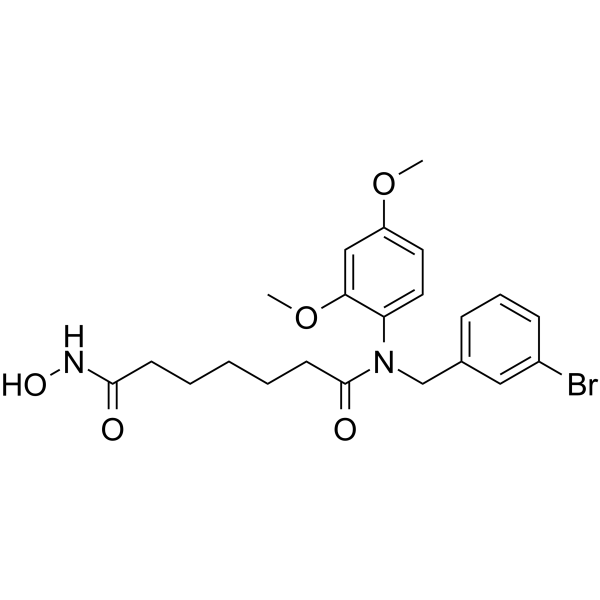
-
- HY-119994
-
|
|
Others
|
Others
|
|
DFPM activates plant resistance protein signaling in roots, and triggers root growth arrest. DFPM decreases root cell viability in accession Col-0. DFPM is light sensitive in aqueous solutions. DFPM becomes bioactive during light and oxygen-dependent modification .
|
-

-
- HY-N8481
-
|
3,6-DHF
|
Apoptosis
|
Cancer
|
|
3,6-Dihydroxyflavone is an anti-cancer agent. 3,6-Dihydroxyflavone dose- and time-dependently decreases cell viability and induces apoptosis by activating caspase cascade, cleaving poly (ADP-ribose) polymerase (PARP). 3,6-Dihydroxyflavone increases intracellular oxidative stress and lipid peroxidation .
|
-
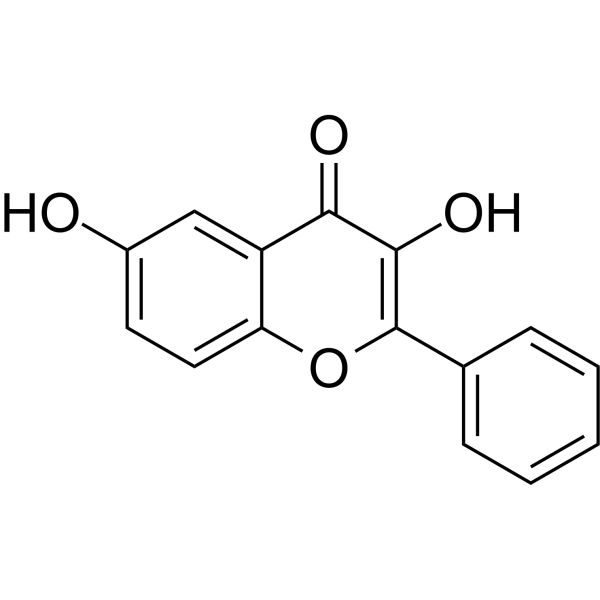
-
- HY-144775
-
|
|
Cholinesterase (ChE)
|
Neurological Disease
|
|
AChE-IN-10 (Compound 24r) is a potent inhibitor of AChE (IC50 = 2.4 nM). AChE-IN-10 potently inhibits AChE, reduces tau phosphorylation at S396 residue, provides neuroprotection by rescuing neuronal morphology and increasing cell viability. AChE-IN-10 is also found to reduce amyloid aggregation in the presence of AChE .
|
-
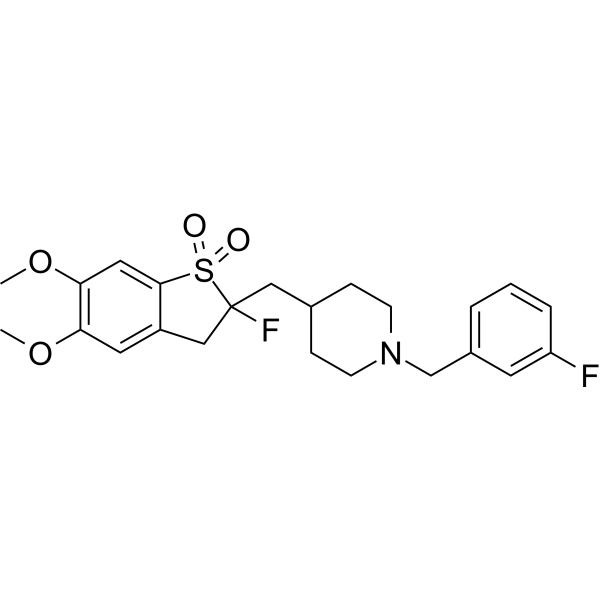
-
- HY-153235
-
|
|
SARS-CoV
Liposome
|
Infection
|
|
COVID-19 Spike Protein mRNA-LNP is a lipid nanoparticle (LNP) containing COVID-19 Spike Protein, suitable for detection of RNA delivery, translation efficiency, cell viability, etc. COVID-19 Spike Protein is the novel coronavirus pneumonia spike protein located on the membrane surface. COVID-19 Spike Protein undertakes the functions of virus binding to host cell membrane receptors and membrane fusion, thereby mediating the entry of COVID-19 virus into cells. COVID-19 Spike Protein is an important site of action for host neutralizing antibodies and a key target for vaccine design .
|
-

-
- HY-107992
-
|
|
Others
|
Others
|
|
Iotrolan is a tradiocontrast agent. Iotrolan has no effect on NP cell viability or induce apoptosis .
|
-
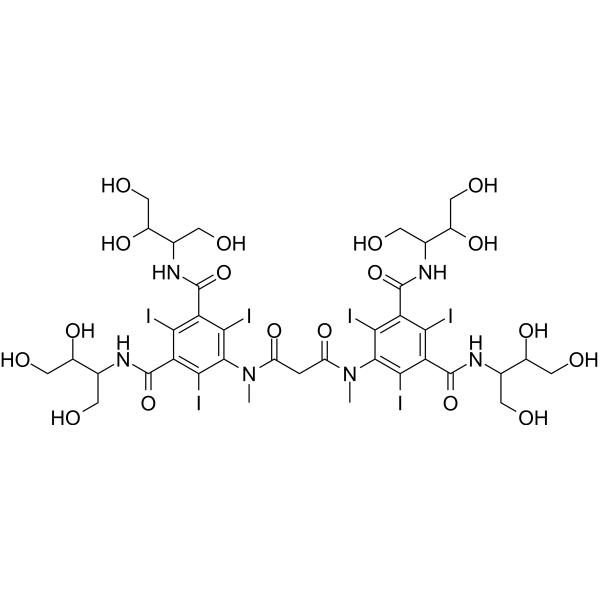
-
- HY-137949
-
|
|
Apoptosis
|
Cancer
|
|
Formoxanthone A is an apoptosis inducing compound that can significantly reduce the viability of HeLa cells at 25 μM .
|
-
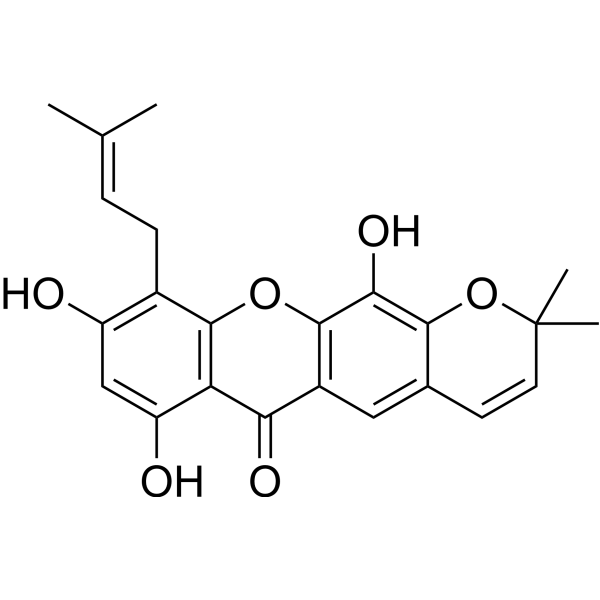
-
- HY-P2576
-
|
|
Bacterial
|
Infection
|
|
Polistes mastoparan is an antimicrobial peptide. Polistes mastoparan increases S. aureus cell K + efflux and inhibits cell viability with EC50 of 5 μM .
|
-
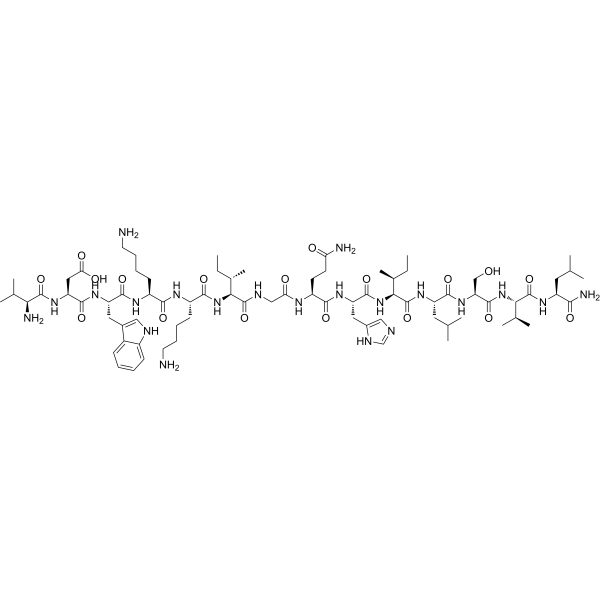
-
- HY-118495
-
|
|
Parasite
|
Infection
|
|
Cardol diene is a potent antiparasitic agent. Cardol diene shows schistosomicidal activity and inhibits cell viability .
|
-

-
- HY-19832
-
SC66
5 Publications Verification
|
Akt
Apoptosis
|
Cancer
|
|
SC66 is an Akt inhibitor, reduces cell viability in a dose- and time-dependent manner, inhibits colony formation and induces apoptosis in hepatocellular carcinoma (HCC) cells.
|
-
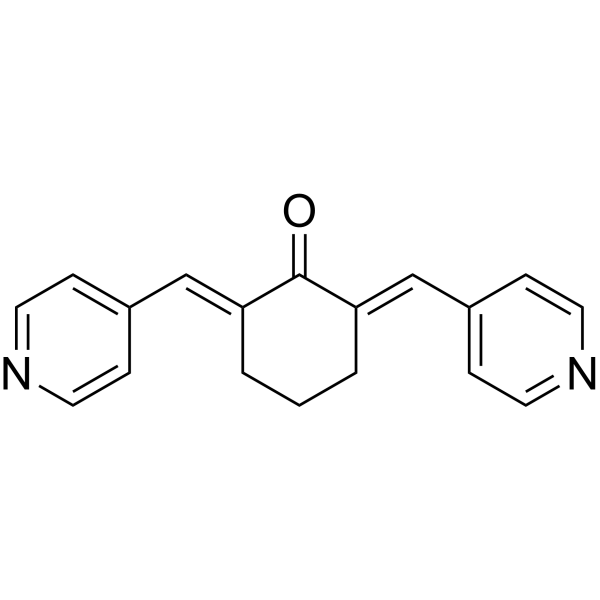
-
- HY-D0830
-
|
Fluorexon tetraethyl ester
|
Fluorescent Dye
|
Others
|
|
Calcein tetraethyl ester is a fluorescent dye, is used in biology as it can be transported through the cellular membrane into live cells, which makes it useful for testing of cell viability and for short-term labeling of cells.
|
-
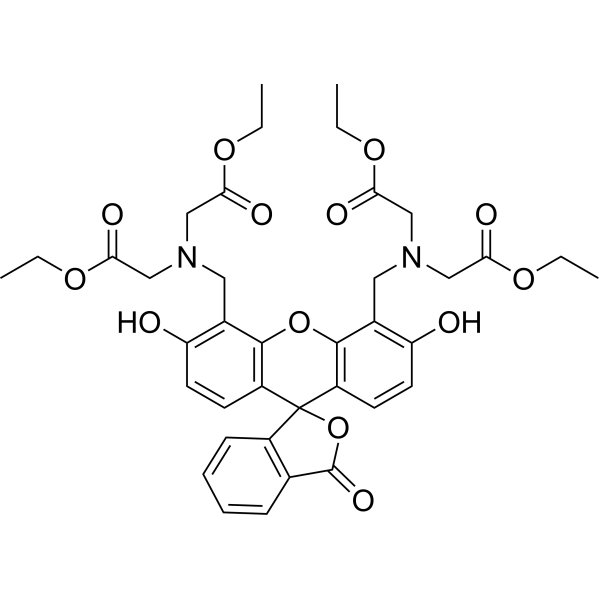
-
- HY-111391
-
|
Diazoresorcinol sodium
|
Bacterial
|
Others
|
|
Resazurin sodium (Diazoresorcinol sodium) is commonly used to measure bacterial and eukaryotic cell viability through its reduction to the fluorescent product resorufin.
|
-

-
- HY-N8293
-
|
|
Others
|
Cancer
|
|
Eupalinolide I inhibits the viability of breast cancer cells. Eupalinolide I can be isolated from Eupatorium lindleyanum .
|
-

-
- HY-122131
-
|
|
Others
|
Others
|
|
XTT (sodium) is used to assess cell viability as a function of redox potential. Actively respiring cells convert the water-soluble XTT to a water-soluble, orange colored formazan product.
|
-
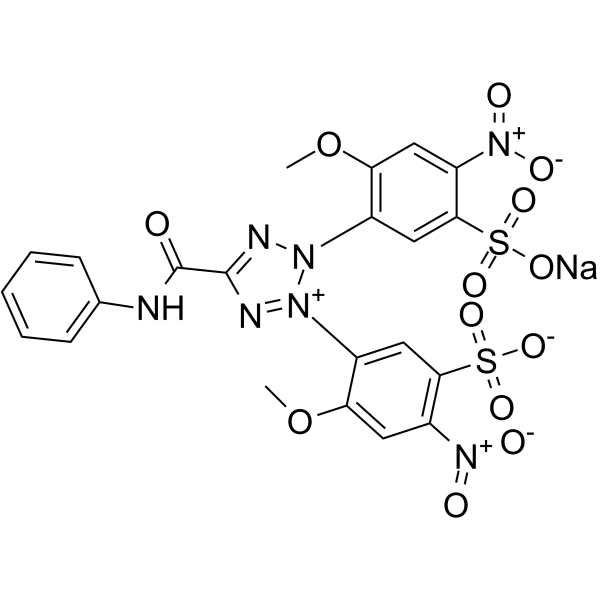
-
- HY-12808
-
|
|
NAMPT
Apoptosis
|
Cancer
|
|
STF-118804 is a highly specific NAMPT inhibitor; reduces the viability of most B-ALL cell lines with IC50 <10 nM.
|
-
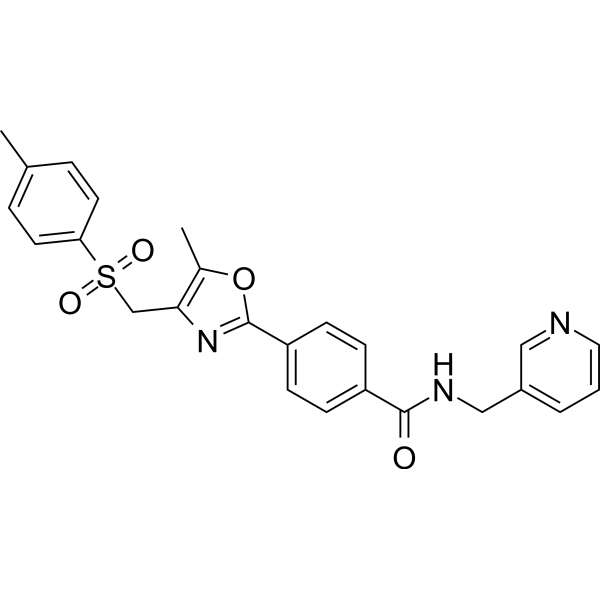
-
- HY-N7825
-
|
|
Others
|
Cancer
|
|
Gomisin L1 is a lignan, shows inhibitory effect on cell viability of A2780 and Ishikawa cells, with IC50s of 39.06 μM and 74.16 μM, respectively .
|
-

-
- HY-N10563
-
|
|
P-glycoprotein
|
Cancer
|
|
Coleon-U-quinone is a potent P-gp inhibitor. Coleon-U-quinone can inhibit cancer cells viability and sensitize multidrug resistance cancer cells to Doxorubicin (HY-15142A) .
|
-

-
- HY-118961
-
|
|
Kinesin
|
Cancer
|
|
SR31527 chloride is a potent KIFC1 inhibitor with an IC50 value of 6.6 µM. SR31527 chloride decreases cell viability and colony formation .
|
-

-
- HY-153745
-
|
|
Trk Receptor
|
Cancer
|
|
Protein kinase inhibitor 5 is a potent TRK-A inhibitor with an IC50 value of 1.8 nM. Protein kinase inhibitor 5 inhibits cell viability .
|
-
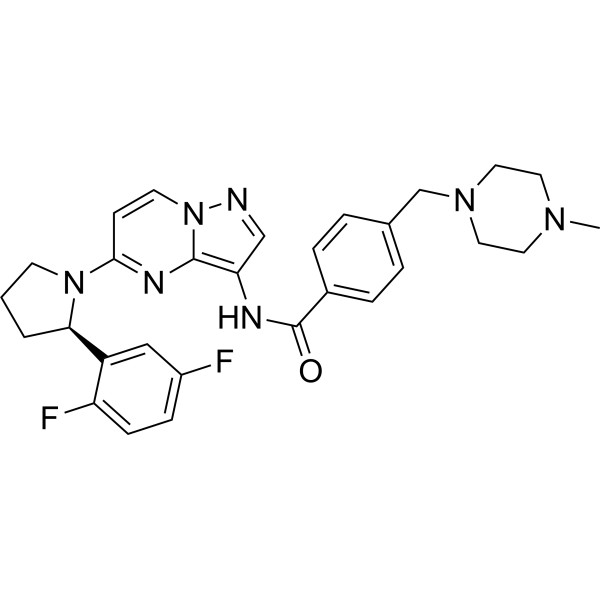
-
- HY-124866
-
|
|
PDI
|
Neurological Disease
|
|
PDI-IN-3 (compound 16F16) is a protein disulfide isomerase (PDI) inhibitor. PDI-IN-3 inhibits cell viability .
|
-
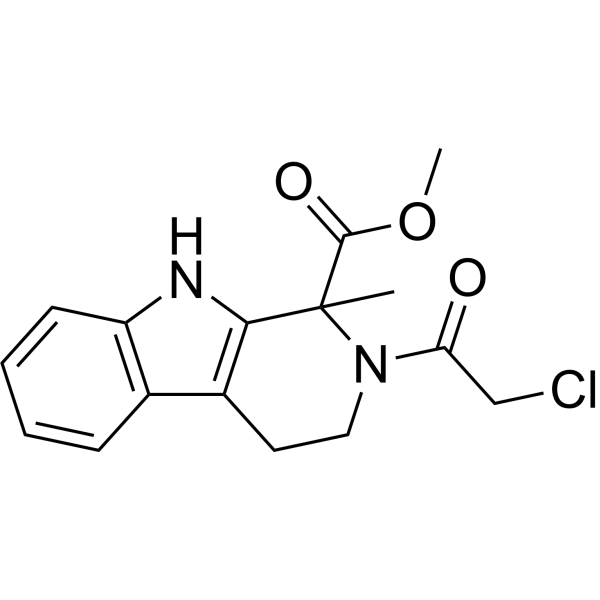
-
- HY-12461
-
|
|
Others
|
Inflammation/Immunology
|
|
WS6 is a novel small molecule that promotes β cell proliferation in rodent and human primary islets with EC50 of 0.28 uM(R7T1 cell viability).
|
-
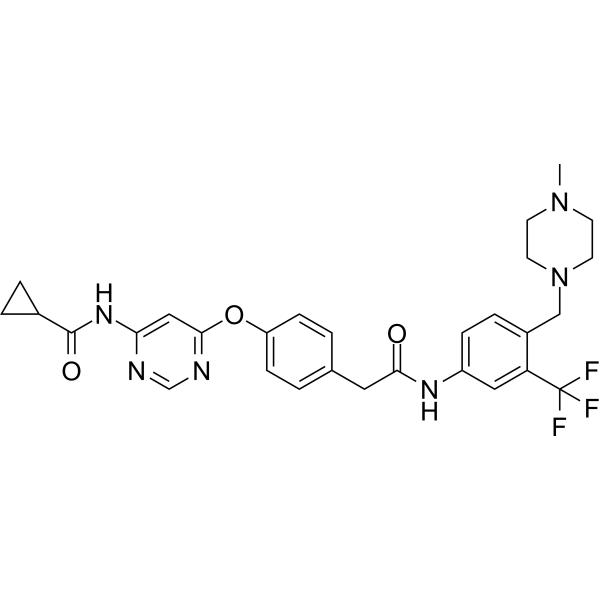
-
- HY-12444
-
|
FAK Inhibitor 14
|
FAK
|
Cancer
|
|
Y15 is a potent and specific inhibitor of focal adhesion kinase (FAK) that inhibits its autophosphorylation activity, decreases the viability of cancer cells, and blocks tumor growth.
|
-
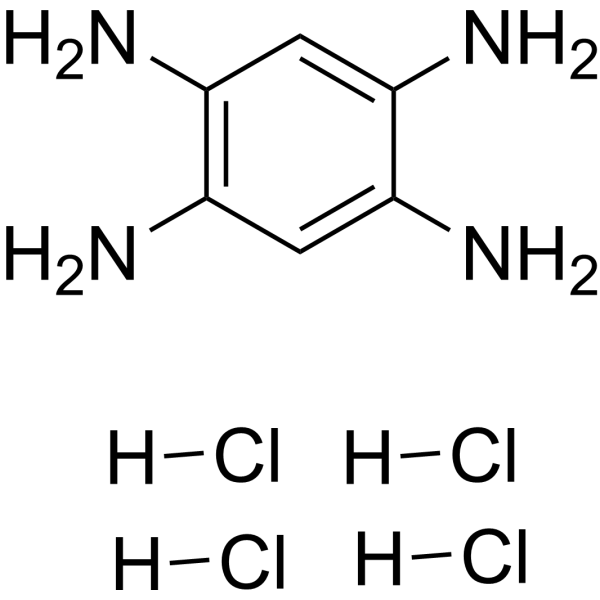
-
- HY-120495
-
|
|
Lipoxygenase
|
Cancer
|
|
EP6 is a potent 5-Lipoxygenase (5-LO) inhibitor. EP6 inhibits the cell viability of tumor cells without mutagenic activity. EP6 can be used in research of cancer .
|
-

-
- HY-78884
-
|
|
Amino Acid Derivatives
|
Cancer
|
|
Anticancer agent 9, a glycine derivative, is an anticancer agent. Anticancer agent 9 can inhibit tumor cells viability of myelogenous leukemia and human prostate cancer .
|
-
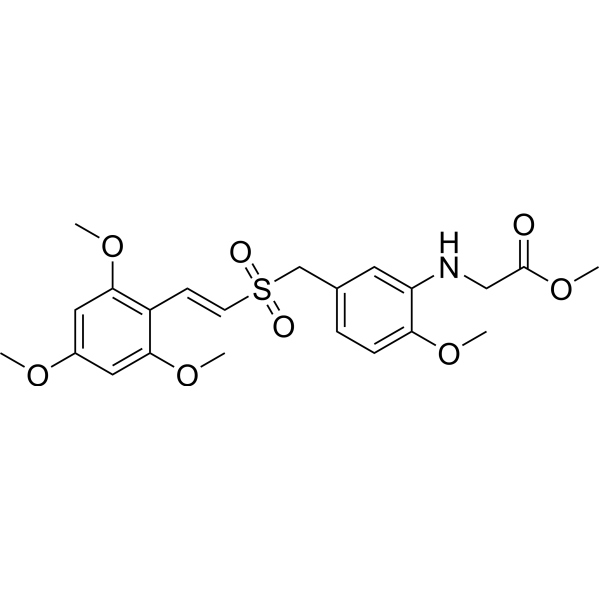
-
- HY-153745A
-
|
|
Trk Receptor
|
Cancer
|
|
Protein kinase inhibitor 5 sulfate hydrate is a potent TRK-A inhibitor with an IC50 value of 1.8 nM. Protein kinase inhibitor 5 sulfate hydrate inhibits cell viability .
|
-
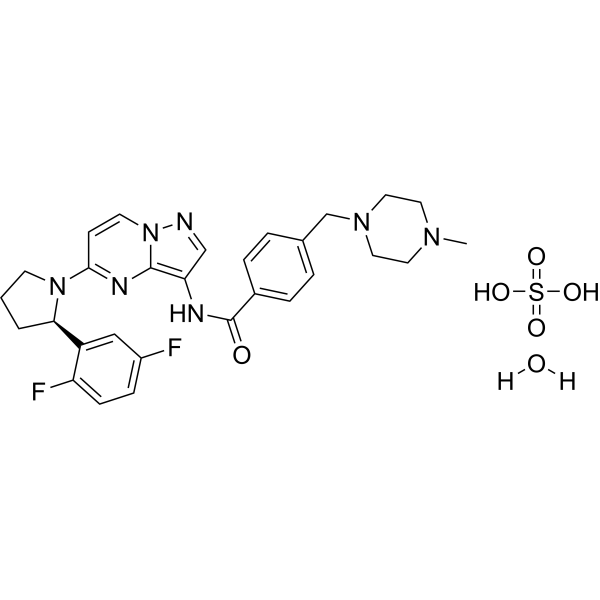
-
- HY-120911
-
|
|
Phospholipase
|
Cancer
|
|
Palmostatin B is an Acyl protein thioesterase 1 and 2 (APT-1, APT-2) inhibitor. Palmostatin B reduces cell viability in a panel of NRAS mutant melanoma cell lines. Palmostatin B inhibits Ras depalmitoylation in cells .
|
-
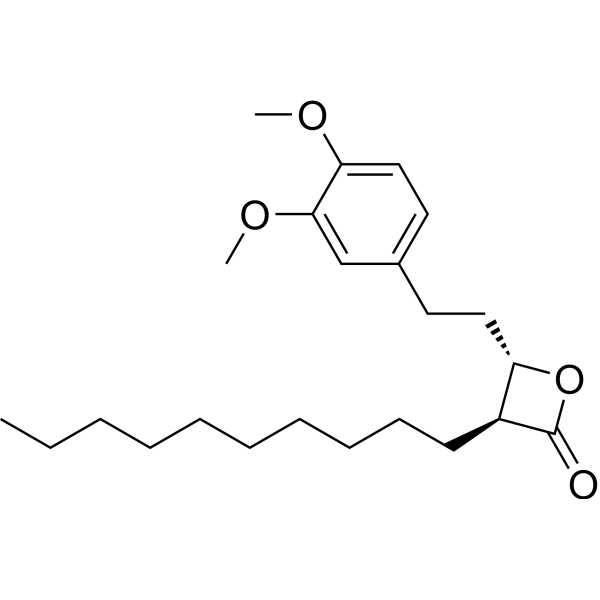
-
- HY-148364
-
|
|
Akt
|
Cancer
|
|
ZINC00784494 is a specific Lipocalin-2 (LCN2) inhibitor. ZINC00784494 inhibits cell proliferation, cell viability and reduces AKT phosphorylation levels in SUM149 cells. ZINC00784494 has good potential for research in inflammatory breast cancer (IBC) .
|
-

-
- HY-Q45780
-
|
|
Akt
|
Cancer
|
|
ZINC00640089 is a specific Lipocalin-2 (LCN2) inhibitor. ZINC00640089 inhibits cell proliferation, cell viability and reduces AKT phosphorylation levels in SUM149 cells. ZINC00640089 has good potential for research in inflammatory breast cancer (IBC) .
|
-
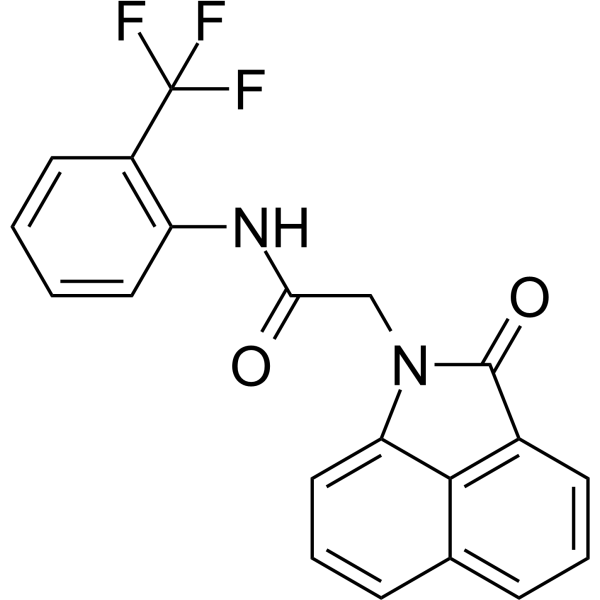
-
- HY-N2140
-
|
|
|
|
|
Herpetone, the ethylacetate extract, is a lignan compound. Herpetone can be isolated from the seeds of Herpetospermum caudigerum. Herpetone significantly improved the cell viability, and has a protective effect on hepatocytes in vitro .
|
-

-
- HY-N7678
-
|
|
Others
|
Cancer
|
|
Gypenoside LXXV, isolated from Gynostemma pentaphyllum, is one of the deglycosylated shapes of ginsenoside Rb1. Gypenoside LXXV significantly reduces cancer cell viability and displays an anti-cancer effect .
|
-

-
- HY-P5307
-
|
INF7-A5K-TAT
|
Biochemical Assay Reagents
|
Others
|
|
Peptide A5K (INF7-A5K-TAT) is an RNP delivery peptide that delivers CRISPR RNPs to T cells. Peptide A5K effectively edits T cells without substantial impact on T cell viability .
|
-
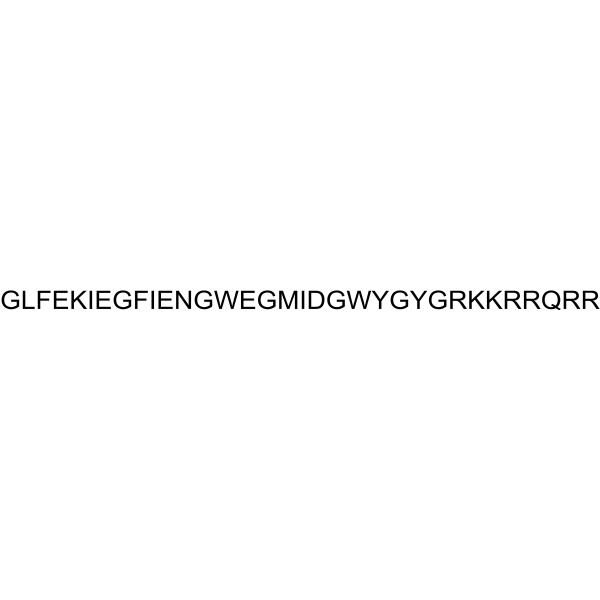
-
- HY-N8387
-
|
|
Ras
|
Cancer
|
|
Neogrifolin is an inhibitor of KRAS. Neogrifolin suppress KRAS expression in human colon cancer cells. Neogrifolin has anti-cell viability activity against HeLa, SW480 and HT29 cells wih IC50s of 24.3, 34.6, and 30.1 μM, respectively .
|
-

-
- HY-D1116
-
|
|
Fluorescent Dye
|
Others
|
|
MitoMark Red I is a fluorescent mitochondrial marker. MitoMark Red I is a red fluorescent dye which accumulates in mitochondria in viable cells and has an excitation wavelength of 578 nm and emission of 599 nm .
|
-
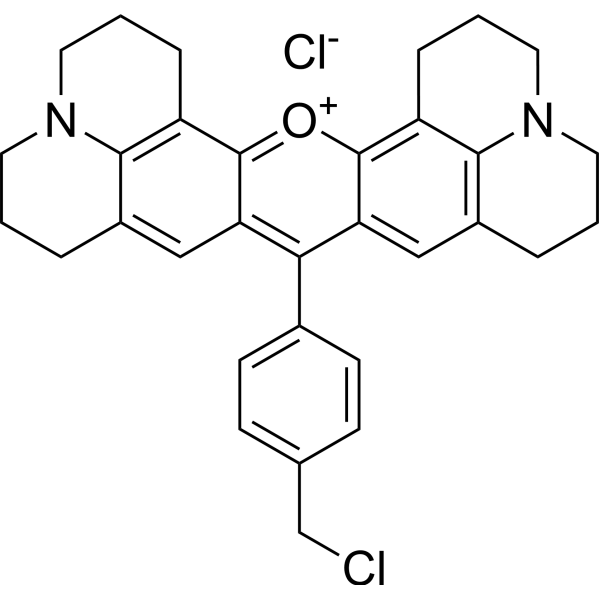
-
- HY-156502
-
|
|
Others
|
Cancer
|
|
TINK-IN-1 (Compound 9) is a potent and selective Traf2- and Nck-interacting kinase (TNIK) inhibitor with an IC50 of 8 nM. TINK-IN-1 inhibits colorectal cancer cells viability .
|
-
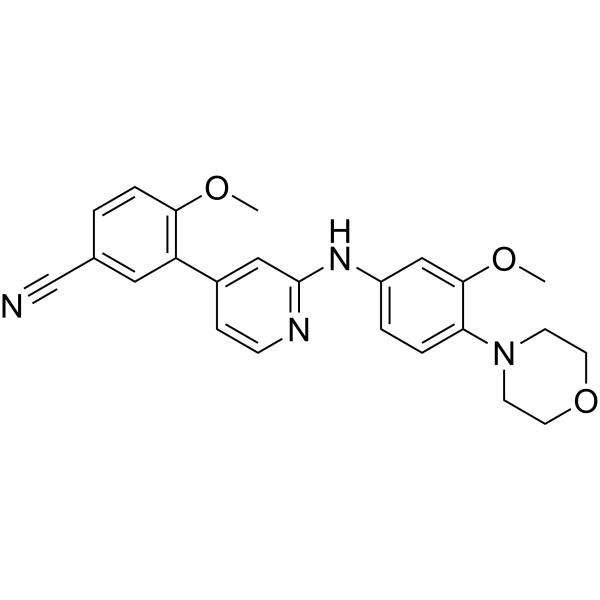
-
- HY-145111
-
|
|
Tyrosinase
|
Cancer
|
|
TNK2-IN-1 is a TNK2 inhibitor. TNK2-IN-1 has an IC50 of 224 nM for TNK2. TNK2-IN-1 can be used for the research of cancer .
|
-
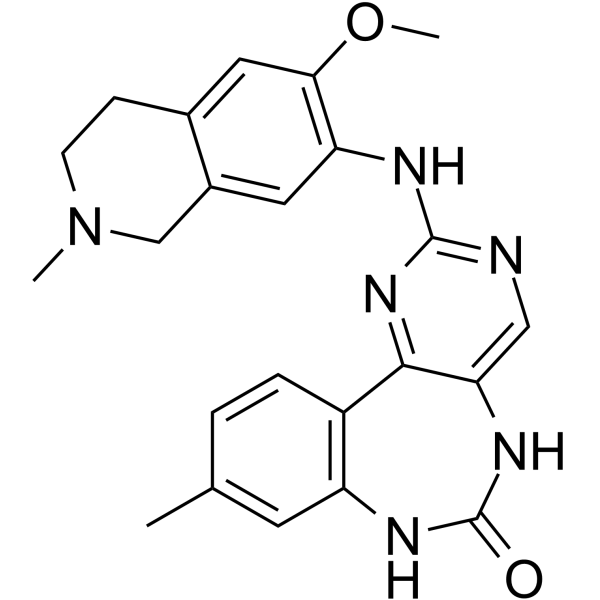
-
- HY-138536
-
|
|
PROTACs
Epigenetic Reader Domain
|
Cancer
|
|
PROTAC CBP/P300 Degrader-1 is a potent PROTAC CBP/P300 degrader. PROTAC CBP/P300 Degrader-1 potently inhibited cell viability of multiple cancer cell lines .
|
-
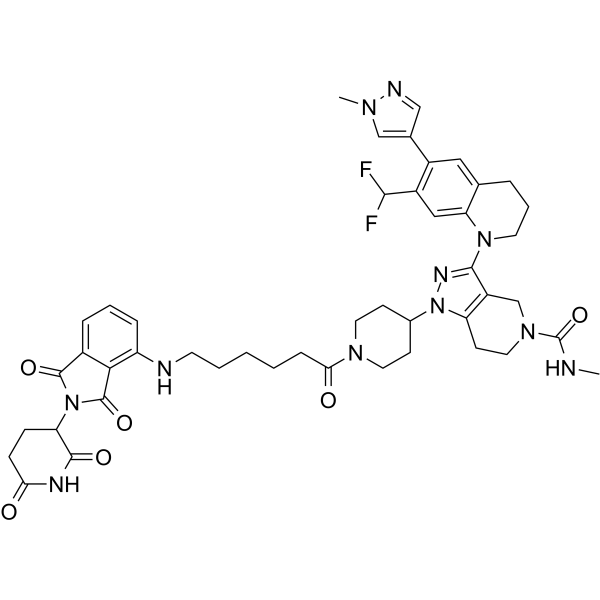
-
- HY-117651
-
|
|
Acyltransferase
|
Cancer
|
|
2-Fluoropalmitic acid, an acyl-CoA synthetase inhibitor, acts as a candidate anti-glioma agent. 2-Fluoropalmitic acid suppresses the viability and stem-like phenotype of glioma stem cells (GSCs). 2-Fluoropalmitic acid also inhibits proliferation and invasion of glioma cell lines .
|
-
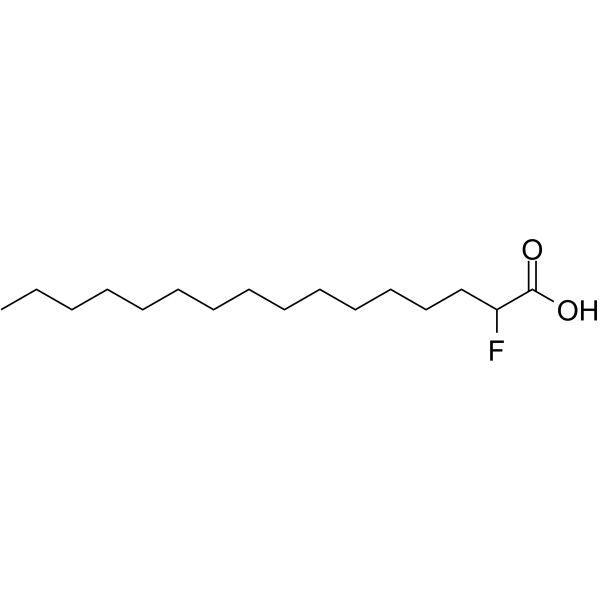
-
- HY-162276
-
|
|
Reactive Oxygen Species
DNA/RNA Synthesis
|
Cancer
|
|
Anticancer agent 188 (compound D43) inhibits DNA synthesis in TNBC cells, leading to cell cycle arrest at the G2/M phase. Anticancer agent 188 has anti-cancer viability by inducing ROS-mediated apoptosis and DNA damage .
|
-

-
- HY-101519
-
|
ZBC 260
|
PROTACs
Epigenetic Reader Domain
Apoptosis
|
Cancer
|
|
BETd-260 (ZBC 260) is a PROTAC connected by ligands for Cereblon and BET, with as low as 30 pM against BRD4 protein in RS4;11 leukemia cell line . BETd-260 potently suppresses cell viability and robustly induces apoptosis in hepatocellular carcinoma (HCC) cells .
|
-
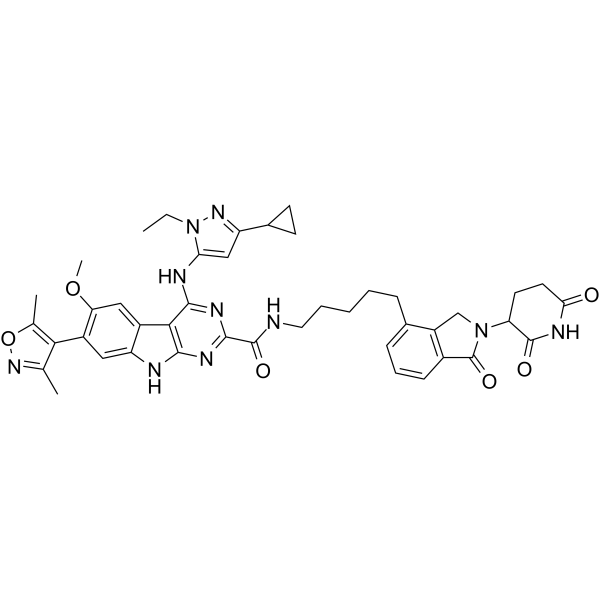
-
- HY-N8754
-
|
|
Others
|
Cardiovascular Disease
Cancer
|
|
(7S)-Dalbergiphenol is a cytotoxic compound that can be isolated from Brazilian red propoli. (7S)-Dalbergiphenol inhibits cancer cell viability. Brazilian red propoli has cardioprotective activity .
|
-

-
- HY-161252
-
|
|
ADC Cytotoxin
|
Cancer
|
|
PBD-monoamide, a modified PBD (pyrrolobenzodiazepine) dimer, is an ADC Cytotoxin. PBD-monoamide can be used for synthesis of DHES0815A (an HER2 ADC). PBD-monoamide has DNA-binding activity and reduces cell viability .
|
-
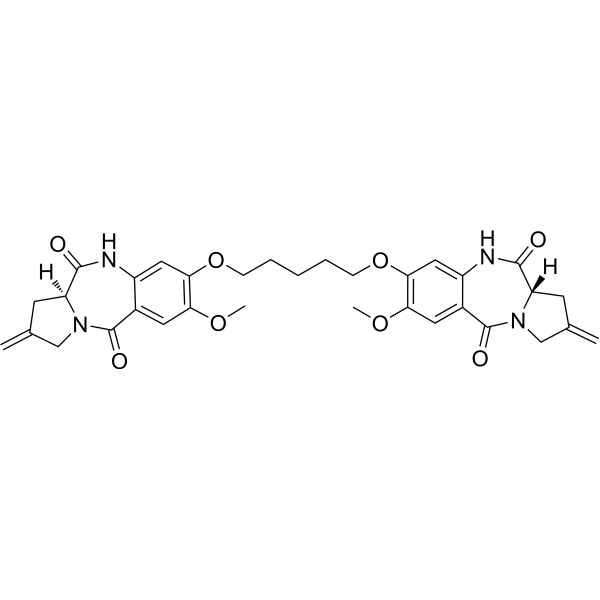
-
- HY-113071
-
-
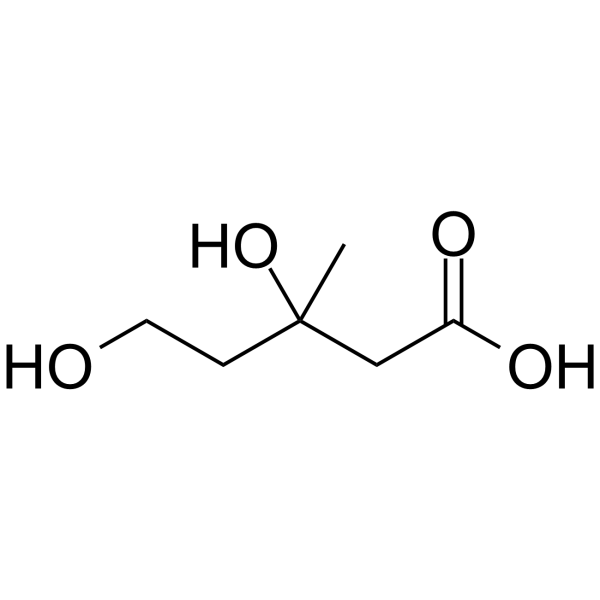
-
- HY-146433
-
|
|
Apoptosis
|
Cancer
|
|
Anticancer agent 55 is a potent anticancer agent. Anticancer agent 55 shows anticancer activity via reducing the cell viability and cell migration in a dose-dependent manner. Anticancer agent 55 induces apoptosis. Anticancer agent 55 has the potential for the research of prostate cancer and breast cancer .
|
-
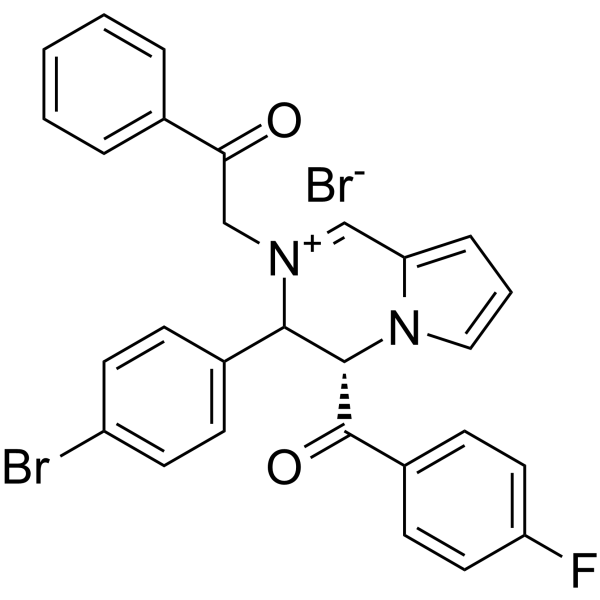
-
- HY-123298
-
|
|
Src
Akt
Apoptosis
|
Cancer
|
|
Chrysotoxine is a dual inhibitor of Src/Akt. Chrysotoxine suppresses cancer stem cells (CSCs) phenotypes by down-regulating Src/Akt signaling. Chrysotoxine reduces cell viability and increases apoptosis level in H460 and H23 cells instead of non-tumor cell lines. Chrysotoxine shows rapid excretion and low bioavailability in rats. Chrysotoxine is used in cancer research .
|
-
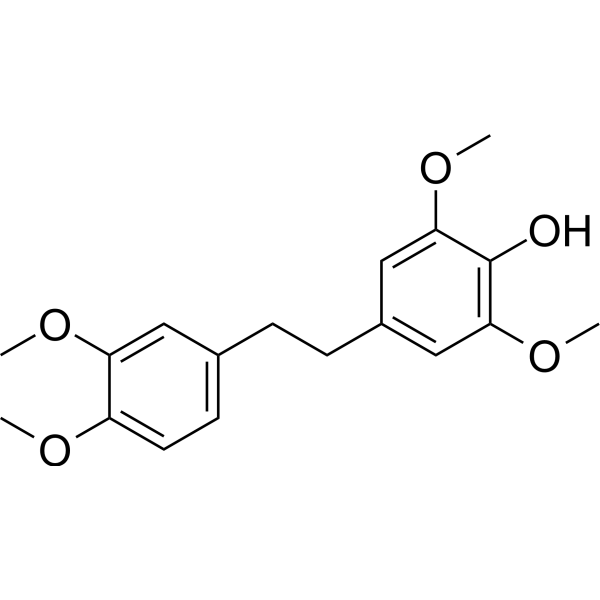
-
- HY-135663
-
|
|
Others
|
Cancer
|
|
Methyl jasmonate is a phytohormone involved in plant defenses under stress conditions. Methyl jasmonate can improve antioxidant properties of blueberry leaf extracts (mainly anthocyanins), and decrease the viability and migration capacity of AGS cells. Anticarcinogenic activity .
|
-
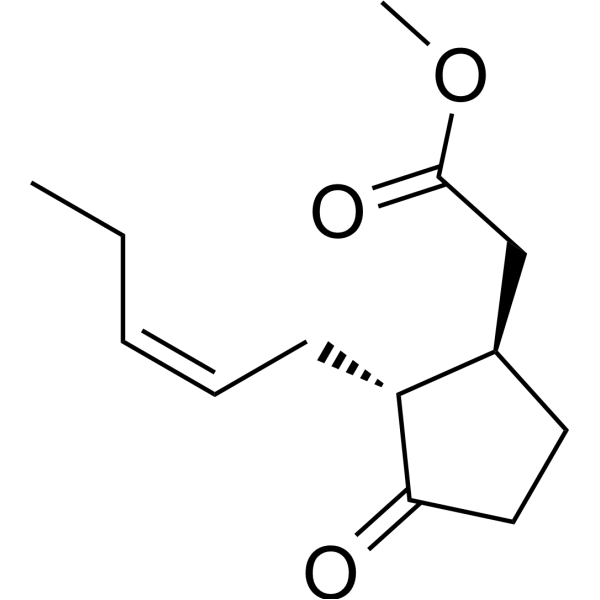
- HY-117383
-
NGI-1
5 Publications Verification
ML414
|
Virus Protease
|
Cancer
|
|
NGI-1 (ML414) is a potent oligosaccharyltransferase (OST) inhibitor, directly targeting and blocking the function of the OST catalytic subunits STT3A and STT3B . NGI-1 is a cell permeable inhibitor and can effectively reduce virus infectivity without affecting cell viability .
|
-
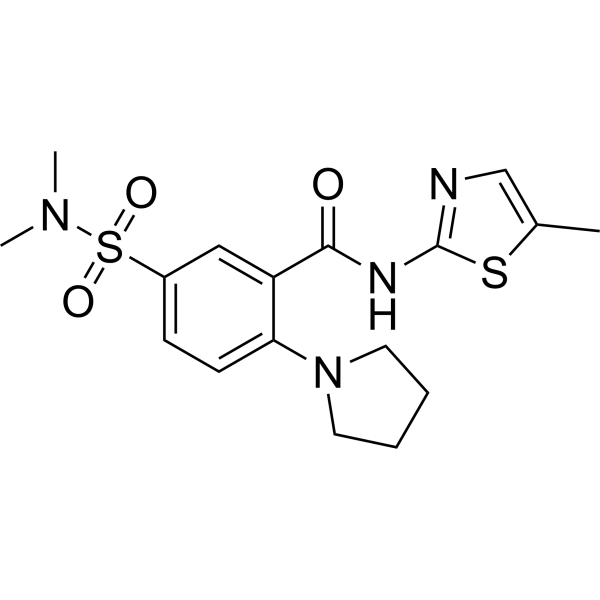
- HY-133145
-
-

- HY-133145A
-
|
|
Others
|
Inflammation/Immunology
Cancer
|
|
hDDAH-1-IN-2 is a selective, orally active human dimethylarginine dimethylaminohydrolase-1 (hDDAH-1) inhibitor. hDDAH-1-IN-2 reveals an excellent profile regarding cell toxicity/viability .
|
-

- HY-147091
-
|
|
Ligands for Target Protein for PROTAC
|
Cancer
|
|
Tazemetostat de(methyl morpholine)-COOH (compound 7) is a ligand for the PROTAC target protein EZH2, which can be used to synthesis of EZH2 degraders (PROTACs). EZH2 degraders have potent cell viability inhibition in diffuse large B-cell lymphoma (DLBCL) and other subtypes of lymphoma .
|
-
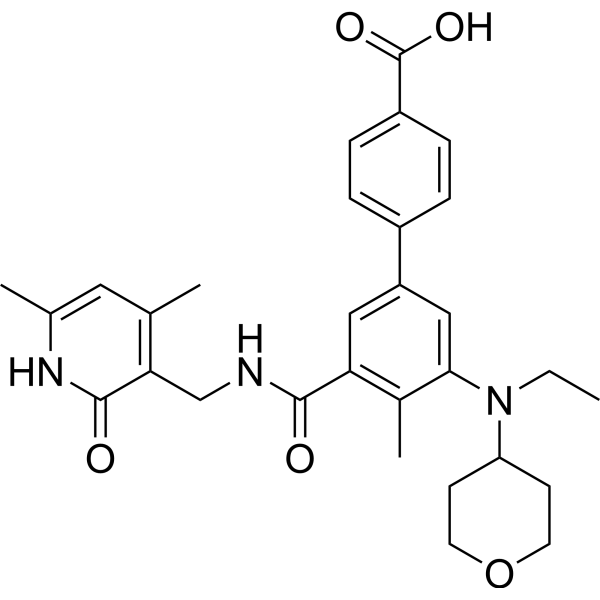
- HY-D0041
-
Calcein-AM
Maximum Cited Publications
37 Publications Verification
Calcein acetoxymethyl ester
|
Fluorescent Dye
|
Cancer
|
|
Calcein AM, has cell membrane permeability and can easily enter the cell. Calcein AM has no fluorescence and is hydrolyzed by endogenous esterase in the cell to produce polar molecule Calcein (Calcein), which has strong negative charge and cannot permeate the cell membrane. Calcein can emit strong green fluorescence, so it is often used with Propidium Iodide for cell viability/virulence detection, excitation/emission wavelength: 494/515 nm .
|
-
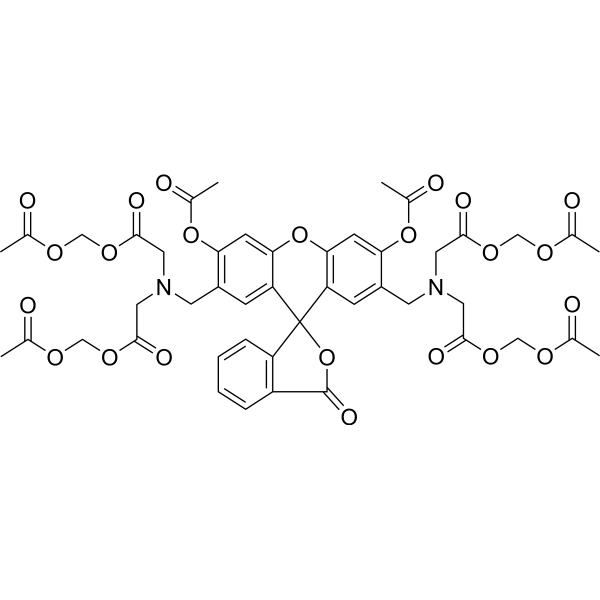
- HY-153080
-
|
|
Fluorescent Dye
|
Others
|
|
Firefly luciferase mRNA will express a luciferase protein, originally isolated from the Photinus pyralis (Firefly). Firefly Luciferase is a frequently used bioluminescent reporter for gene regulation and function study. It is applicable in assays for gene expression, cell viability and in vivo imaging etc.
|
-
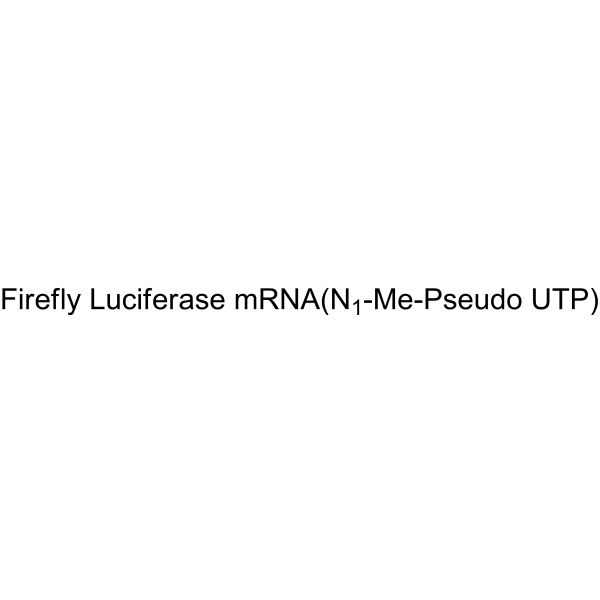
- HY-113071A
-
-
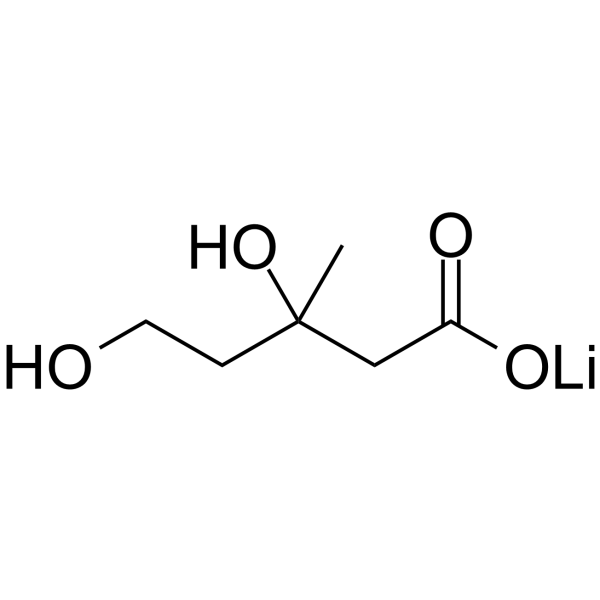
- HY-148838
-
|
|
c-Myc
|
Cancer
|
|
c-Myc inhibitor 8 (compound 56) is a c-Myc inhibitor. c-Myc inhibitor 8 effectively inhibits cell viability of a variety of cancer cells. c-Myc inhibitor 8 inhibits human prostate and lung cancer growth in mouse models. c-Myc inhibitor 8 can be used for cancer research .
|
-

- HY-138939
-
|
|
Lipoxygenase
|
Cancer
|
|
5-LOX-IN-2, an inhibitor of 5-lipoxygenase (5-LOX) with an IC50 of 0.33 μM, inhibits 5-LOX in a dose-dependent manner . 5-LOX-IN-2, reduces the cell viability of renal cancer cells and induces apoptosis, can be used for cancer research .
|
-

- HY-17602
-
|
BBI503
|
Others
|
Cancer
|
|
Amcasertib (BBI503) is an orally active and small-molecule multi-kinase inhibitor. Amcasertib exhibits inhibitory activity against the NANOG and CD133 expression and cell viability in PC-9/GR cells. As an orally available cancer cell stemness kinase inhibitor with potential antineoplastic activity, it is currently being studied in phase I clinical trials in a number of cancers.
|
-
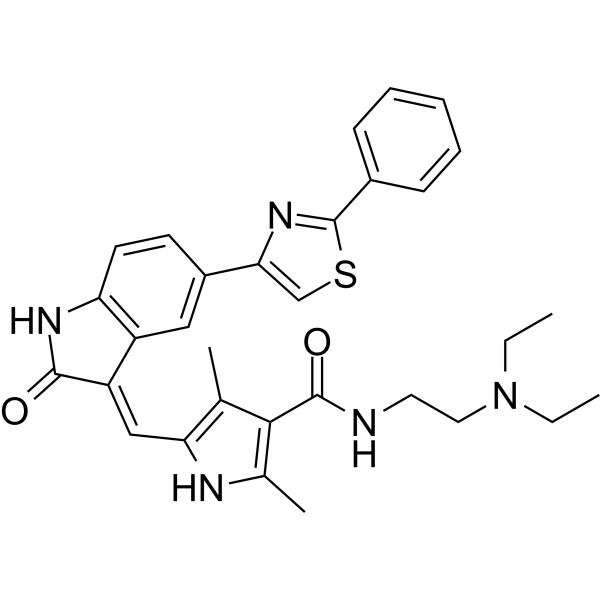
- HY-126275
-
|
|
ROCK
|
Cancer
|
|
HSD1590 is potent ROCK inhibitor, with IC50s of 1.22 and 0.51 nM for ROCK1 and ROCK2, respectively. HSD1590 exhibits single digit nanomolar binding to ROCK (Kds<2 nM). HSD1590 displays low cytotoxicity .
|
-
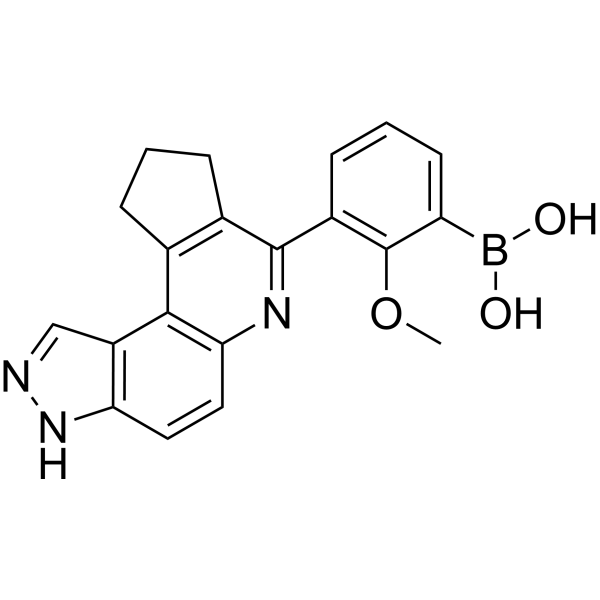
- HY-110052
-
|
|
Casein Kinase
|
Cancer
|
|
TBCA is a highly selective CK2 (casein kinase II) inhibitor with an IC50 of 110 nM and a Ki of 77 nM. TBCA shows selectivity for CK2 over CK1, DYRK1A and a panel of 27 other kinases .
|
-

- HY-138537
-
|
|
IKK
|
Cancer
|
|
NF-κB-IN-1, a 4-arylidene crucumin analogue, is a potent NF-κB signaling pathway inhibitor. NF-κB-IN-1 directly inhibits IKK to block NF-κB activation. NF-κB-IN-1 effectively inhibits the viability of lung cancer cells and attenuates the clonogenic activity of A549 cells .
|
-
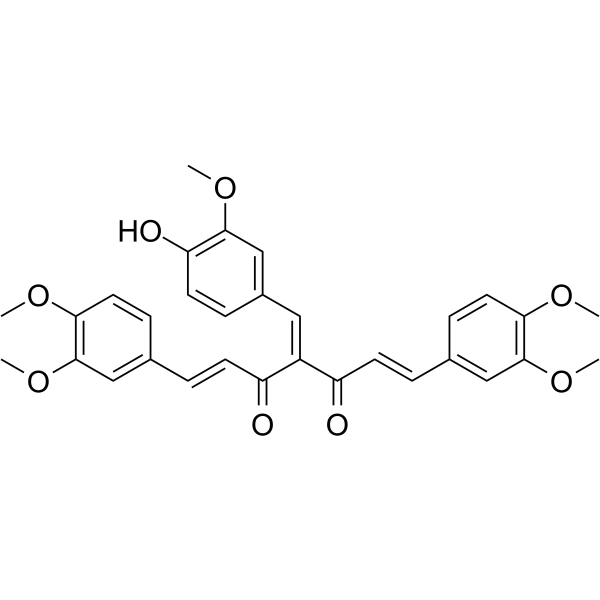
- HY-N12140
-
|
GHSC-74
|
Apoptosis
|
Cancer
|
|
2'-epi-2'-O-Acetylthevetin B (GHSC-74) is a cardiac glycoside that can be isolated from the seeds of Cerbera manghas L. 2'-epi-2'-O-Acetylthevetin B inhibits cell viability, induces apoptosis and loss of mitochondrial membrane potential in HepG2 cells .
|
-
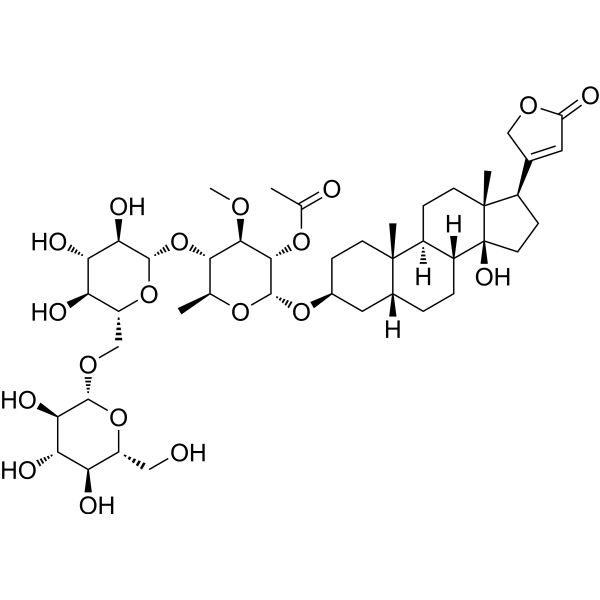
- HY-W094758A
-
|
|
Fluorescent Dye
|
Cancer
|
|
4-Di-1-ASP is a styryl dye used to stain glioma cells in living brain tissue for analysis of cell structure, viability, proliferation and endocytosis, cytokinesis and phagocytosis, as well as for observation of mitochondrial structures in living cells. 4-Di-1-ASP fluoresces green when imaged microscopically (λex /λem = 475/606 nm) .
|
-
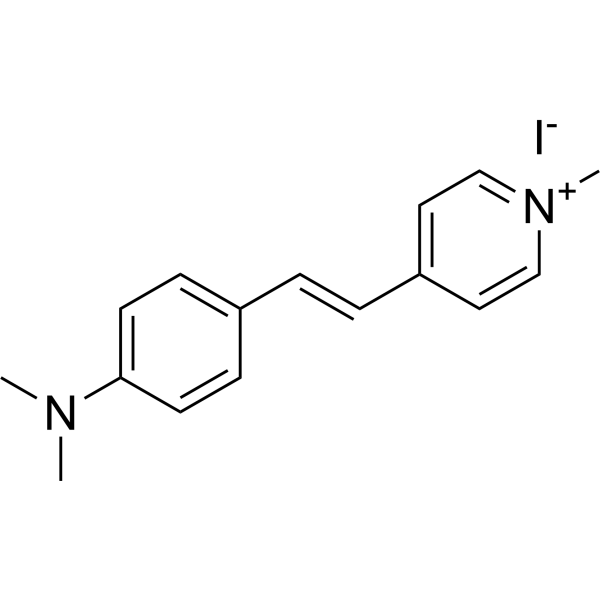
- HY-121282
-
|
Pecazine
|
MALT1
Apoptosis
|
Cancer
|
|
Mepazine (Pecazine) is a potent and selective MALT1 protease inhibitor with IC50s of 0.83 and 0.42 μM for GSTMALT1 full length and GSTMALT1 325-760, respectively. Mepazine affects viability of ABC-DLBCL cells by enhancing apoptosis .
|
-
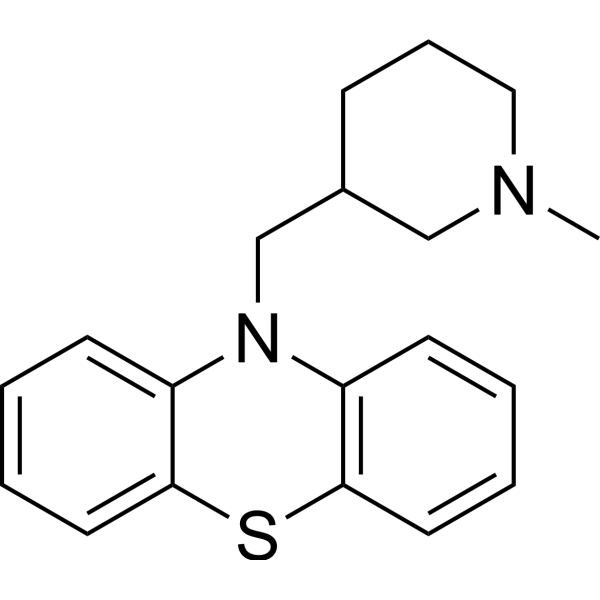
- HY-121282A
-
|
Pecazine hydrochloride
|
MALT1
Apoptosis
|
Cancer
|
|
Mepazine hydrochloride (Pecazine hydrochloride) is a potent and selective MALT1 protease inhibitor with IC50s of 0.83 and 0.42 μM for GSTMALT1 full length and GSTMALT1 325-760, respectively. Mepazine hydrochloride affects viability of ABC-DLBCL cells by enhancing apoptosis .
|
-

- HY-128431
-
|
|
Reactive Oxygen Species
|
Neurological Disease
Metabolic Disease
|
|
Arochlor 1254 is a polychlorinated biphenyl (PCB) mixture with biphenyl and 54% chlorine. Aroclor 1254 reduced cell viability and induced overproduction of intracellular reactive oxygen species in a dose-dependent manner. Arochlor 1254 exposure reduces calcium homeostasis, osteoblast differentiation and bone formation .
|
-

- HY-N6843
-
|
|
Caspase
PI3K
Akt
mTOR
STAT
|
Cancer
|
|
Arnicolide D is a sesquiterpene lactone isolated from Centipeda minima. Arnicolide D modulates the cell cycle, activates the caspase signaling pathway and inhibits the PI3K/AKT/mTOR and STAT3 signaling pathways. Arnicolide D inhibits Nasopharyngeal carcinoma (NPC) cell viability in a concentration- and time-dependent manner .
|
-
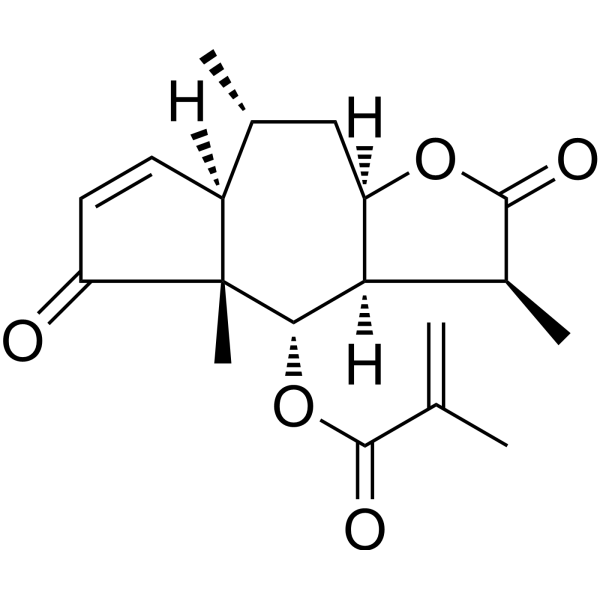
- HY-12855
-
|
|
Autophagy
|
Cancer
|
|
Lys01, a dimeric form of Chloroquine (HY-17589A), is an autophagy inhibitor. Lys01 inhibits cell viability of 1205Lu, c8161, LN229, HT-29 cells with IC50s of 3.6, 3.8, 7.9, 6.0 μM. Lys01 can be used for anticancer research .
|
-
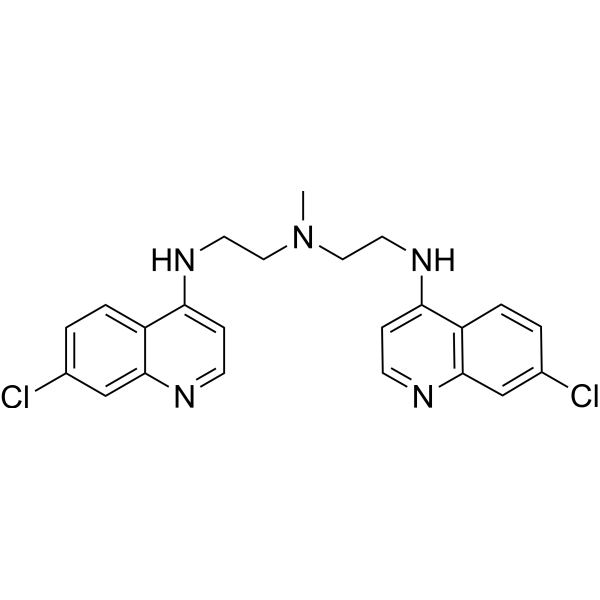
- HY-D0970
-
|
Direct Blue 14
|
Fluorescent Dye
|
Others
|
|
Diphenyl Blue (Trypan Blue) is a cell active dye, the most commonly used dye for the identification of dead cells, of en used to test cell membrane integrity and cell viability. Diphenyl Blue staining is one of the methods for tissue and cell culture. When cells are deactivated or have incomplete cell membranes, Diphenyl Blue can stain them Blue. Normal living cells with intact cell membranes reject Diphenyl blue and do not stain them blue. However, macrophages are capable of phagocytosis of Diphenyl Blue, so it can be used as a living stain for macrophages .
|
-

- HY-W077242
-
|
|
DNA/RNA Synthesis
|
Cancer
|
|
1,4-Anthraquinone is a potent anticancer agent. 1,4-Anthraquinone blocks nucleoside transport, inhibits macromolecule synthesis, induces DNA fragmentation, and decreases the growth and viability of cancer cells. 1,4-Anthraquinone can be used to research anti-leukemia .
|
-
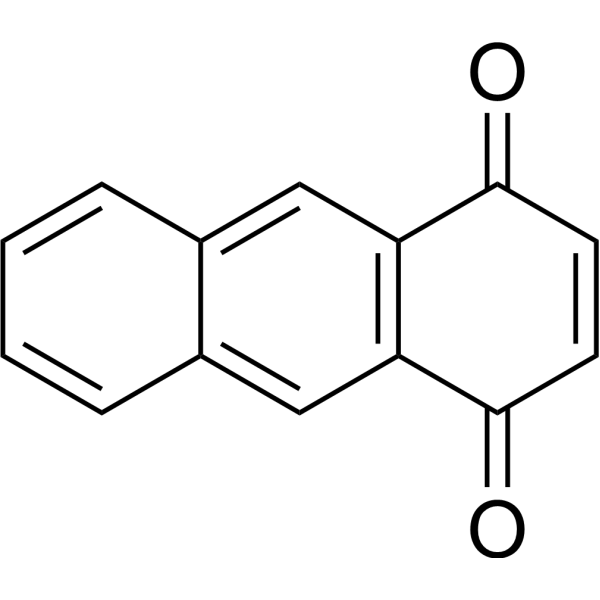
- HY-124996
-
|
|
NO Synthase
|
Neurological Disease
Inflammation/Immunology
Cancer
|
|
(Rac)-ZLc-002, an inhibitor of nNOS interaction with nitric oxide synthase 1 adaptor protein (NOS1AP), suppresses inflammatory nociception and chemotherapy-induced neuropathic pain and synergizes with Paclitaxel (HY-B0015) to reduce tumor cell viability .
|
-
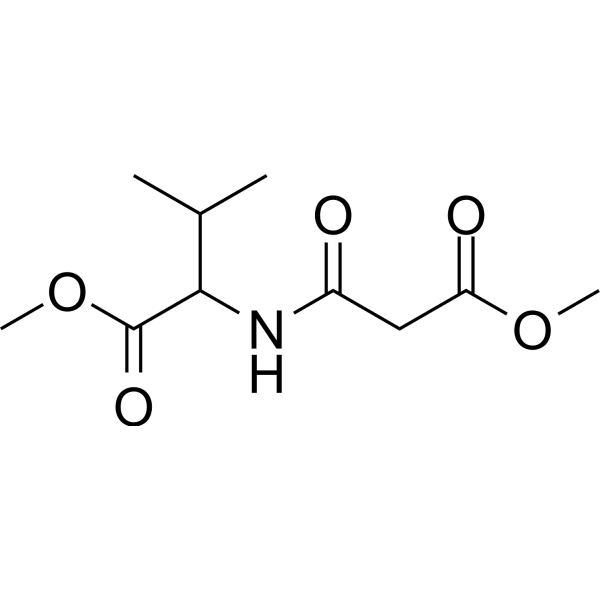
- HY-153339
-
|
|
Others
|
Cancer
|
|
E235 is an expression regulator of activates transcription factor 4 (ATF4). E235 reduces cell viability by activating integrated stress response (ISR) and DNA damage response signals. E235 has anti-proliferative activity and can be used for tumor research .
|
-
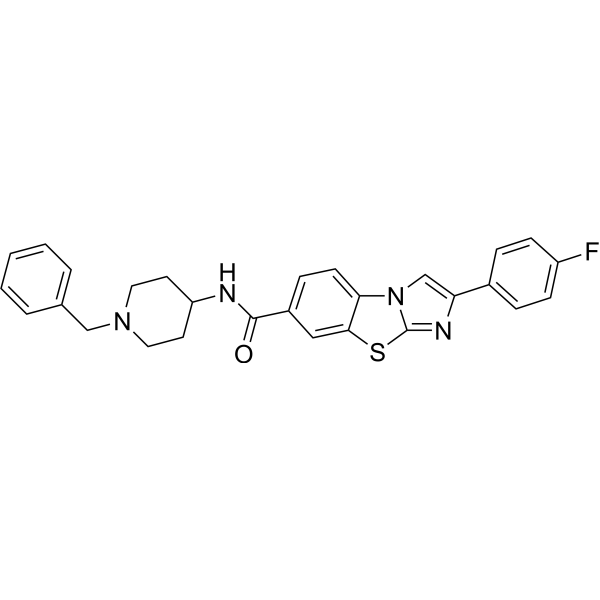
- HY-126005
-
|
|
Sodium Channel
|
Cancer
|
|
VGSC blocker-1 is a potent and small molecule blocker of neonatal isoform of the VGSC subtype, Nav1.5 (nNav1.5). VGSC blocker-1 blocks INa peak currents 34.9% at 1 μM and inhibits cell invasion 0.3% at 1 μM in human breast cancer cell line MDA-MB-231, without affecting the cell viability .
|
-
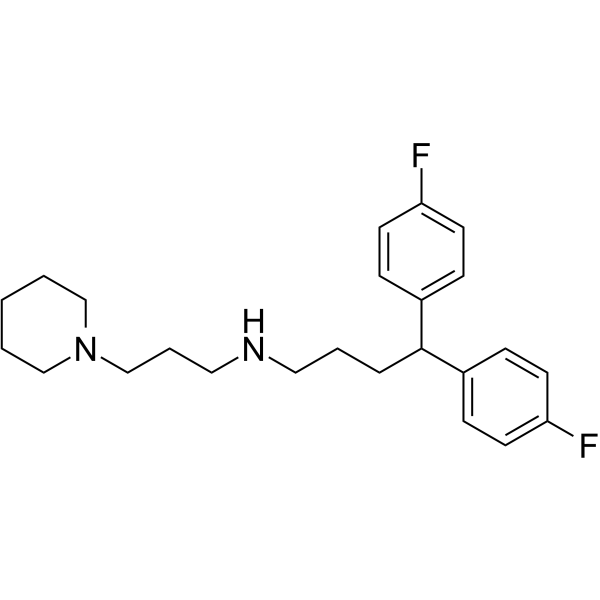
- HY-W004520
-
|
5-Methylphenazinium methylsulfate
|
Bacterial
Antibiotic
Apoptosis
|
Others
|
|
Phenazine methylsulfate is a free radical generator. Phenazine methylsulfate has been used as an electron transfer reactant in cell viability assays. Phenazine methylsulfate induces ssDNA break formation in the presence of the reducing agent NADPH. Phenazine methylsulfate induces oxidative DNA damage in an alkaline comet assay and apoptosis.
|
-
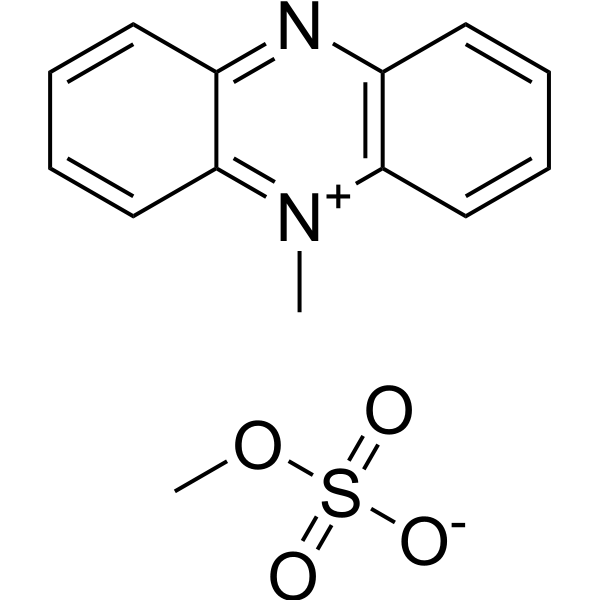
- HY-114989
-
|
|
Apoptosis
|
Cancer
|
|
Fluorizoline selectively and directly binds to prohibitin 1 (PHB1) and 2 (PHB2), and induces apoptosis. Fluorizoline reduces chronic lymphocytic leukemia (CLL) cell viability through the upregulation of NOXA and BIM. Fluorizoline exerts antitumor action in a p53-independent manner .
|
-

- HY-148384A
-
|
|
Others
|
Cancer
|
|
UHMCP1 dihydrochloride is a potent UHM domain splicing inhibitor with a Kd value of 79 µM. UHMCP1 dihydrochloride prevents the SF3b155/U2AF 65 interaction. UHMCP1 dihydrochloride impacts cell viability and RNA splicing .
|
-
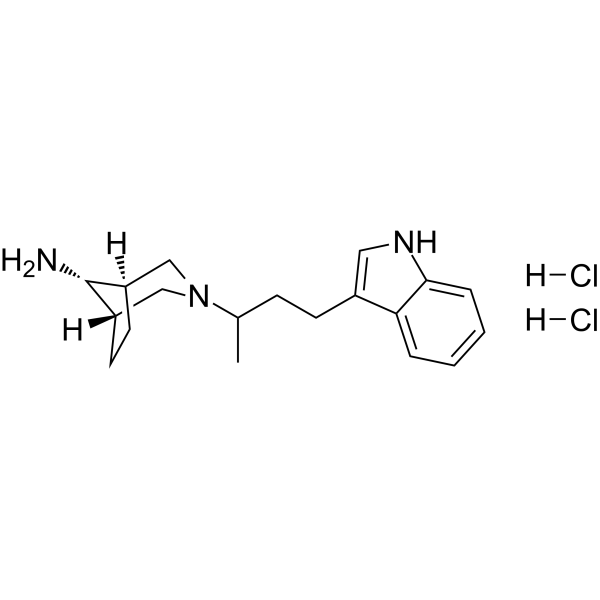
- HY-113071R
-
|
MVA (Standard)
|
Endogenous Metabolite
|
Cardiovascular Disease
Neurological Disease
Metabolic Disease
|
|
Mevalonic acid (Standard) is the analytical standard of Mevalonic acid. This product is intended for research and analytical applications. Mevalonic acid (MVA) is a precursor substance of the mevalonate pathway, which is essential for cell growth and proliferation. Mevalonic acid is effective in inhibiting Simvastatin (HY-17502)-induced decrease in C2C12 cell viability in vitro. Mevalonic acid can be used in studies of myopathy and heart failure .
|
-

- HY-111163
-
|
|
Apoptosis
|
Cancer
|
|
NSC49652 is a reversible, orally active p75 neurotrophin receptor (p75 NTR, also known as NGFR, TNFRSF16, and CD271) agonist. NSC49652 targets the transmembrane domain of p75 NTR. NSC49652 induces apoptosis and affects the viability of melanoma cells .
|
-
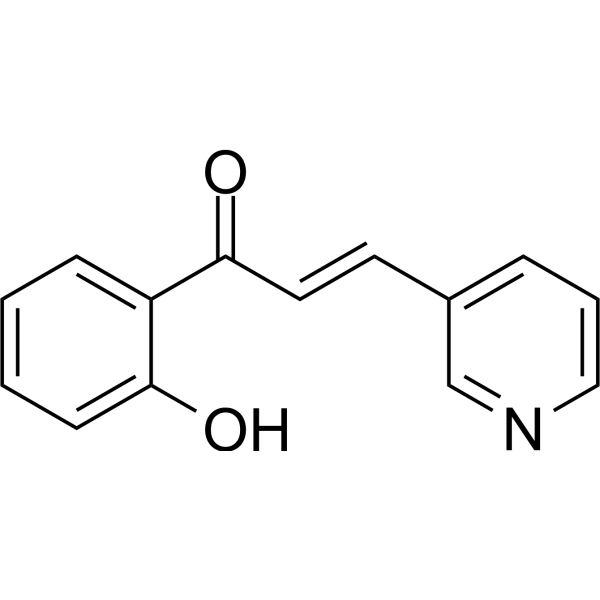
- HY-113455
-
|
Alpha-dimorphecolic acid
|
Apoptosis
Endogenous Metabolite
|
Cancer
|
|
9S-HODE (Alpha-dimorphecolic acid) is an octadecadienoic acid and the main active derivative of linoleic acid, which can reduce the viability of HL-60 cells and induce apoptosis. 9S-HODE is rich in lipid peroxidation (LPO) products and is almost an ideal marker for LPO .
|
-
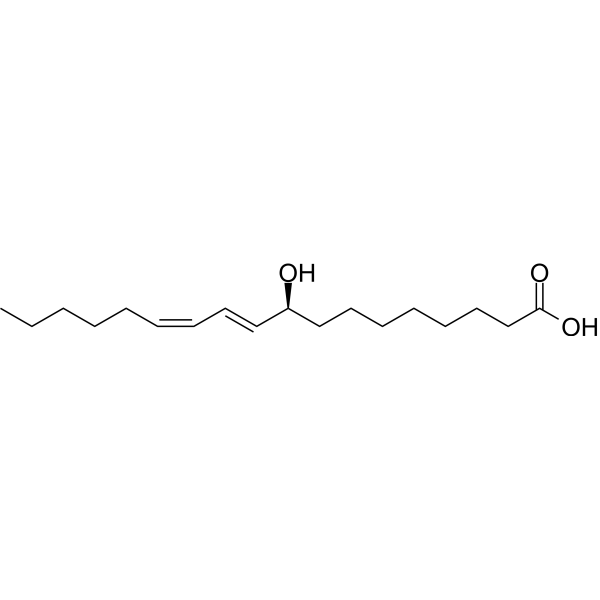
- HY-162393
-
|
|
Apoptosis
|
Cancer
|
|
XL44, an hRpn13 binder, induces hRpn13-dependent apoptosis and also restricts cell viability by a PCLAF-dependent mechanism. XL44 induces ubiquitin-dependent loss of hRpn13 Pru and ubiquitin-independent loss of select KEN box containing proteins .
|
-
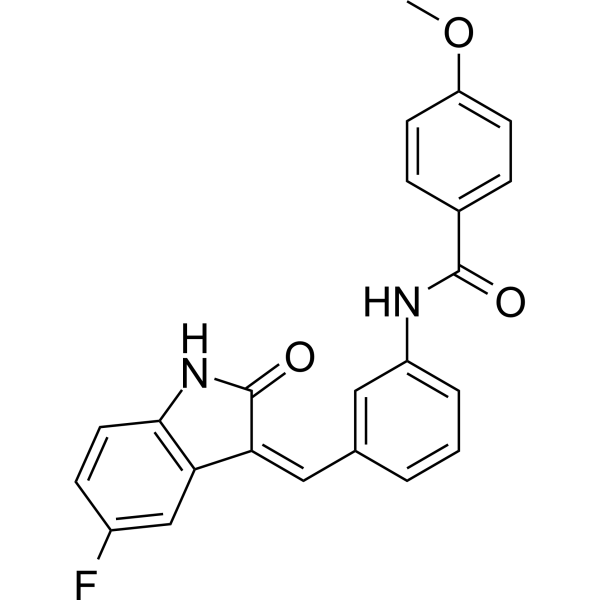
- HY-146178
-
|
|
Others
|
Cancer
|
|
IMP2-IN-1 (compound 4) is a potent IMP2 inhibitor with IC50 value of 81.3~127.5 for IMP2 RNA sequence. IMP2-IN-1 reduces IMP2 in SW480 cells. IMP2-IN-1 significantly reduces the viability of both differentiated and non-differentiated Huh7 cells .
|
-

- HY-151361
-
|
|
AMPK
|
Cancer
|
|
AMPK-IN-3 (compound 67) is a potent and selective AMPK inhibitor with IC50s of 60.7, 107 and 3820 nM for AMPK (α2), AMPK (α1) and KDR, respectively. AMPK-IN-3 inhibits AMPK does not affect cell viability or cause significant cytotoxicity in K562 cells. AMPK-IN-3 can be used in study of cancer .
|
-
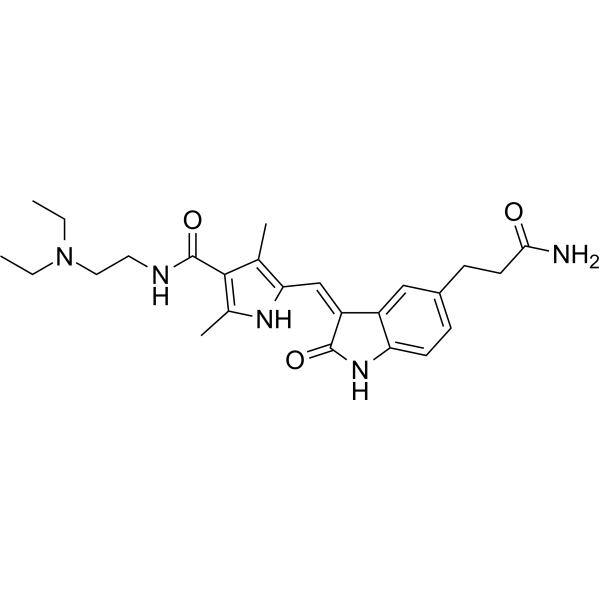
- HY-153231
-
|
|
Fluorescent Dye
Liposome
|
Others
|
|
eGFP mRNA-LNP is a lipid nanoparticle (LNP) containing eGFP mRNA, suitable for assays of RNA delivery, translation efficiency, cell viability, etc. eGFP circRNA carries Enhanced Green Fluorescent Protein (Enhanced Green Fluorescent Protein) eGFP, which will express green fluorescent protein after entering the cell. eGFP is commonly used as a reporter gene detectable by fluorescence microscopy or flow cytometry .
|
-
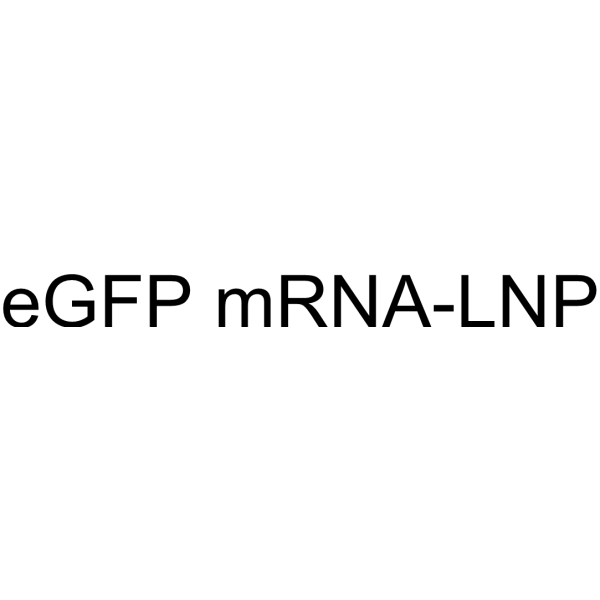
- HY-153232
-
|
|
Fluorescent Dye
Liposome
|
Others
|
|
eGFP circRNA-LNP is a lipid nanoparticle (LNP) containing eGFP circRNA, suitable for assays of RNA delivery, translation efficiency, cell viability, etc. eGFP circRNA carries Enhanced Green Fluorescent Protein (Enhanced Green Fluorescent Protein) eGFP, which will express green fluorescent protein after entering the cell. eGFP is commonly used as a reporter gene detectable by fluorescence microscopy or flow cytometry .
|
-
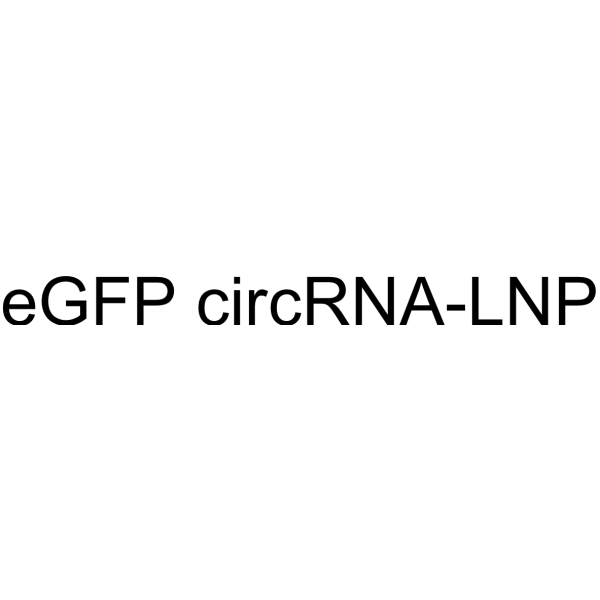
- HY-136976
-
WST-1
1 Publications Verification
|
Fluorescent Dye
|
|
|
WST-1 is a kind of water-soluble tetrazolium salt. WST induces the intracellular mitochondrial dehydrogenase to conduct NADH-dependent enzyme digestion reaction, releasing the water-soluble methyl benzene product. WST-1 can be used for the detection of cell proliferation and cytotoxicity, via the determination of the light absorption value at 450 nm .
|
-
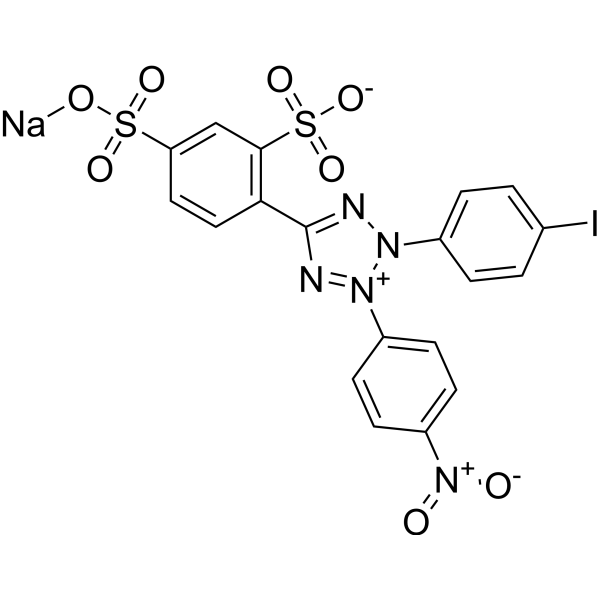
- HY-148836
-
|
|
c-Myc
|
Infection
Cardiovascular Disease
Cancer
|
|
c-Myc inhibitor 6 (compound A102) is a c-Myc inhibitor. c-Myc inhibitor 6 decreases cancer cell viability and degrades c-Myc protein. c-Myc inhibitor 6 can be used for the research of c-Myc imbalance, such as cancer, cardiovascular diseases, and viral infection .
|
-

- HY-115974
-
|
|
Others
|
Cancer
|
|
GRPR antagonist-1 is a potent gastrin releasing peptide receptor (GRPR) antagonist, having the cytotoxicity against certain cancer cells (IC50 of 4.97, 4.36 and 3.40 μM in PC3, Pan02 and HGC-27 cells, respectively). GRPR antagonist-1 inhibits HGC-27 cell viability by decreasing the Bcl-2 level and increasing the Bax level, causing apoptosis. Anticancer activity .
|
-
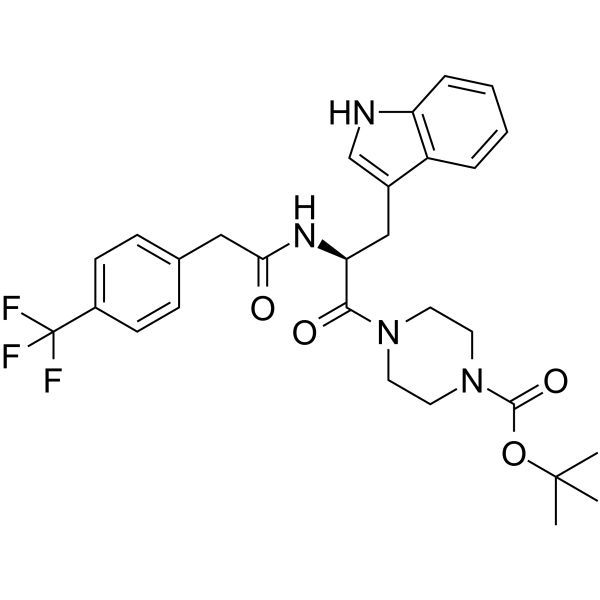
- HY-13326
-
ASP3026
5 Publications Verification
|
Anaplastic lymphoma kinase (ALK)
Apoptosis
ROS Kinase
Caspase
PARP
IGF-1R
STAT
Akt
JNK
|
Cancer
|
|
ASP3026 is a selective and orally active inhibitor of anaplastic lymphoma kinase (ALK). ASP3026 is a selective and oral active anaplastic lymphoma kinase (ALK) inhibitor with a IC50 value of 3.5 nM. ASP3026 can inhibit the phosphorylation of IGF-1R, STAT3, AKT and JNK proteins, and induce the cleavage of caspase 3 and PARP. It also inhibited ROS and ACK. ASP3026 can be used in anti-tumor research .
|
-

- HY-B0636
-
|
|
Glucocorticoid Receptor
FGFR
|
Inflammation/Immunology
Endocrinology
Cancer
|
|
Triamcinolone acetonide inhibits basic fibroblast growth factor (bFGF) induced proliferation of retinal endothelial cells. Triamcinolone acetonide reduces chondrocyte viability and leads to cartilage destruction. Triamcinolone acetonide activates macrophage with anti-inflammatory characteristics. Triamcinolone acetonide can be used in the study of diseases such as atopic dermatitis .
|
-
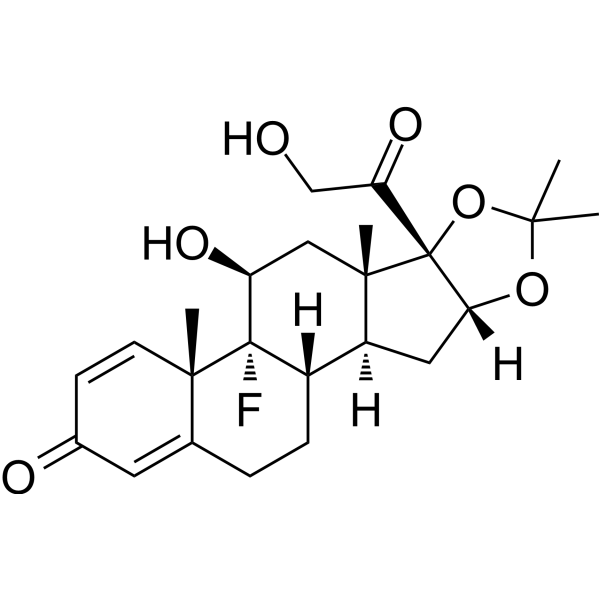
- HY-N6950
-
|
|
PI3K
Akt
mTOR
Parasite
Apoptosis
|
Infection
Cancer
|
|
Hederacolchiside A1, isolated from Pulsatilla chinensis, suppresses proliferation of tumor cells by inducing apoptosis through modulating PI3K/Akt/mTOR signaling pathway . Hederacolchiside A1 has antischistosomal activity, affecting parasite viability both in vivo and in vitro .
|
-
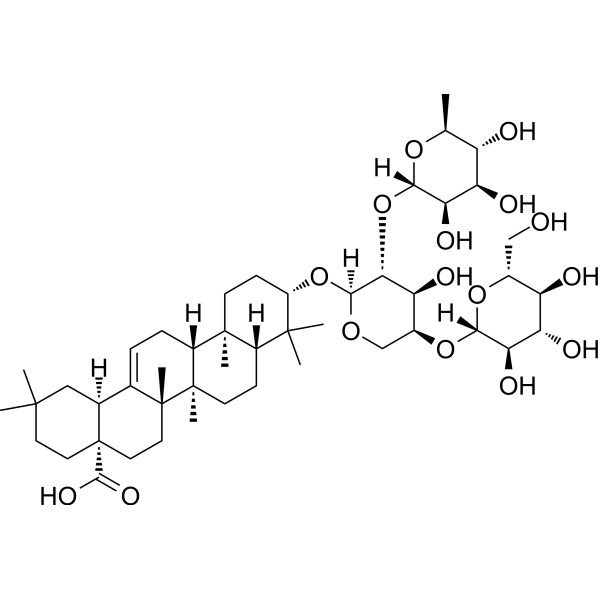
- HY-114095
-
-
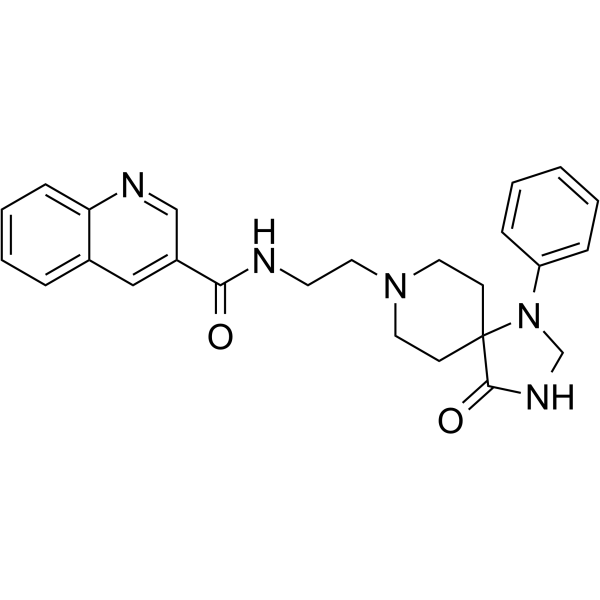
- HY-162079
-
|
|
MMP
Apoptosis
|
Cancer
|
|
Anticancer agent 183 (compound 4h) inhibits the matrix metalloproteinase-9 (MMP-9) viability than 75% at 100 μg/mL. Anticancer agent 183 has anticancer activity with an IC50 value of <0.14 μM on the A549 cell line. Anticancer agent 183 induces apoptotic .
|
-
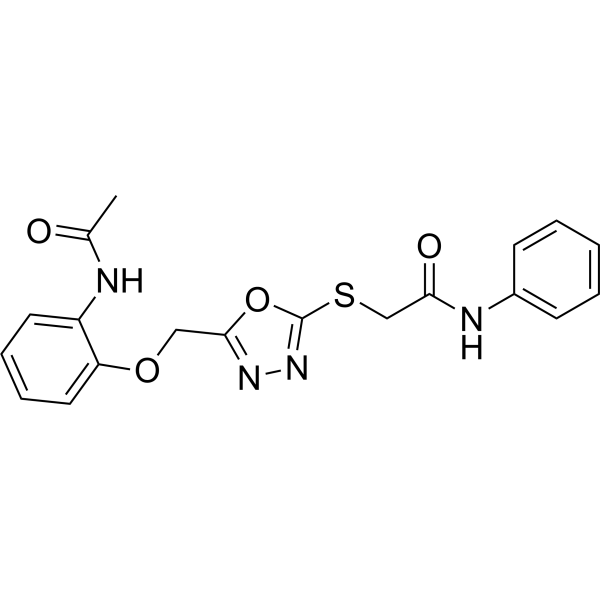
- HY-163062
-
|
|
Microtubule/Tubulin
Apoptosis
Complement System
|
Cancer
|
|
Tubulin/NRP1-IN-1 (compound TN-2) is a dual inhibitor of Tubulin and NRP1 with IC50s of 0.71 and 0.85 μM, respectively. Tubulin/NRP1-IN-1 significantly inhibits the viability of prostate tumor cell lines and induces apoptosis .
|
-

- HY-150795
-
|
|
TGF-beta/Smad
PI3K
Akt
ERK
JNK
|
Others
|
|
SY-LB-35 is a potent bone morphogenetic protein (BMP) receptor agonist. SY-LB-35 can stimulate significant increases in cell number and cell viability in the C2C12 myoblast cell line, and causes shifts towards the S and G2/M phases of the cell cycle. SY-LB-35 stimulates canonical Smad and non-canonical PI3K/Akt, ERK, p38 and JNK intracellular signaling pathways .
|
-

- HY-155745
-
|
|
Apoptosis
|
|
|
Antitumor agent-115 (SS-12) is an effective anti-tumor compound with an IC50 value of 0.34 μM-24.14 μM for cell line 4T1. Antitumor agent-115 can block the cell cycle of mouse breast cancer cell line 4T1, reduce the mitochondrial membrane potential, and induce apoptosis, and the IC50 value is 8-25 μmol/L for cell viability. Antitumor agent-115 can be used for breast cancer research .
|
-

- HY-12688
-
|
|
Endogenous Metabolite
Reactive Oxygen Species
|
Neurological Disease
|
|
Succinyl phosphonate is an α-ketoglutarate dehydrogenase (KGDHC) inhibitor, effective inhibits (KGDHC) in muscle, bacterial, brain, and cultured human fibroblasts . Succinyl phosphonate trisodium salt is an 2-oxoglutarate dehydrogenase (OGDH) inhibitor, impairs viability of cancer cells in a cell-specific metabolism-dependent manner . Succinyl phosphonate trisodium salt inhibits the glutamate-induced ROS production in glutamate-stimulated hippocampal neurons in situ .
|
-
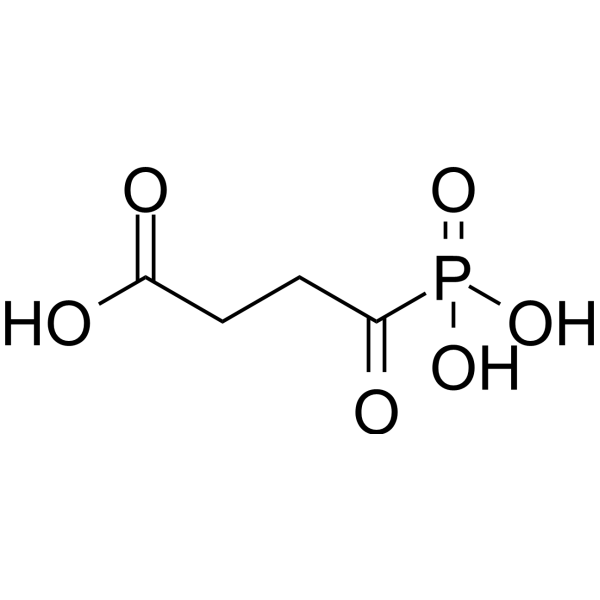
- HY-12688A
-
|
|
Endogenous Metabolite
Reactive Oxygen Species
|
Neurological Disease
Metabolic Disease
Cancer
|
|
Succinyl phosphonate trisodium salt is an α-ketoglutarate dehydrogenase (KGDHC) inhibitor, effective inhibits (KGDHC) in muscle, bacterial, brain, and cultured human fibroblasts . Succinyl phosphonate trisodium salt is an 2-oxoglutarate dehydrogenase (OGDH) inhibitor, impairs viability of cancer cells in a cell-specific metabolism-dependent manner . Succinyl phosphonate trisodium salt inhibits the glutamate-induced ROS production in glutamate-stimulated hippocampal neurons in situ .
|
-
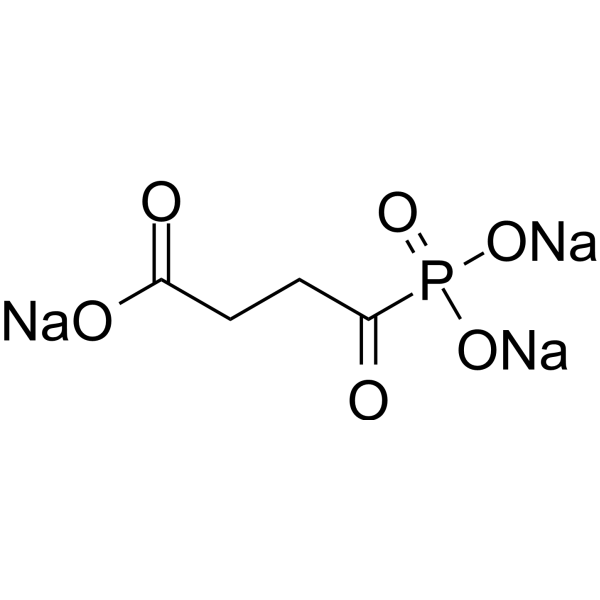
- HY-129241
-
AGX51
4 Publications Verification
|
Others
|
Cancer
|
|
AGX51 is a first-in-class pan-Id (inhibitors of DNA-binding/differentiation proteins) antagonist and degrader. AGX51 inhibits the Id1-E47 interaction, leading to ubiquitin-mediated degradation of Ids, cell growth arrest, and reduces viability. AGX51 inhibits the TNBC cell lines with IC50s of nearly 25 μM. AGX51 can be used for the research of cancer .
|
-

- HY-148713
-
|
|
Apoptosis
|
Cancer
|
|
Anti-CSCs agent-1 is a potent anti-CSCs agent. Anti-CSCs agent-1 inhibits cell growth and cell migration. Anti-CSCs agent-1 induces Apoptosis. Anti-CSCs agent-1 inhibits the viability of CSCs. Anti-CSCs agent-1 enhances the production of ROS in CSCs. Anti-CSCs agent-1 shows antitumor activity .
|
-
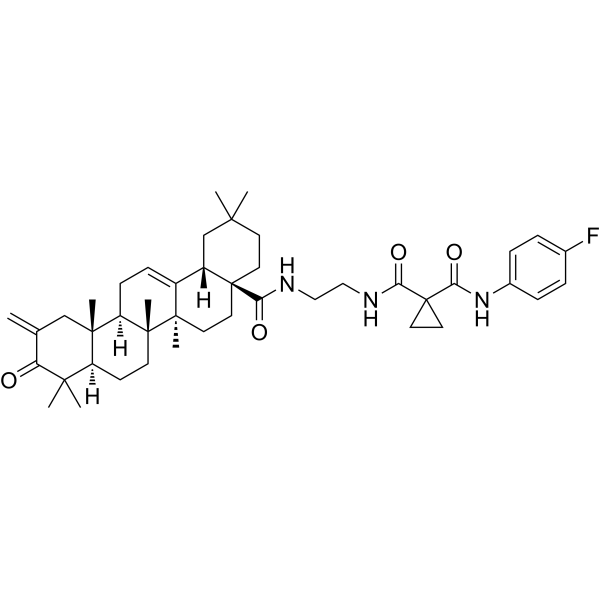
- HY-133015
-
|
|
Bcl-2 Family
|
Cancer
|
|
Mcl-1 inhibitor 3 (compound 1) is a highly potent and orally activate macrocyclic Mcl-1 inhibitor (Ki= 0.061 nM; IC50=19 nM in an OPM-2 cell viability assay). Mcl-1 inhibitor 3 shows good pharmacokinetic properties and excellent in vivo efficacy without toxicity ..
|
-

- HY-N3187
-
-
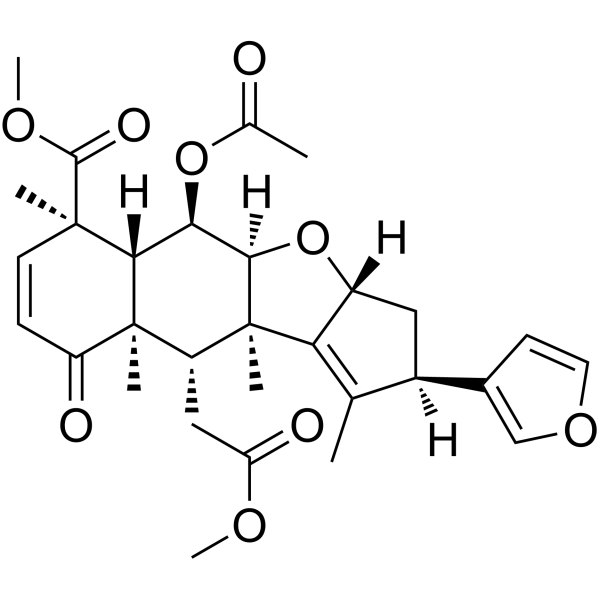
- HY-110347
-
|
|
Mps1
|
Cancer
|
|
Mps1-IN-1 dihydrochloride is a potent and ATP-competitive Mps1 kinase inhibitor with an IC50 of 367 nM. Mps1-IN-1 dihydrochloride inhibit Mps1 mitotic kinase activity and abrogates spindle assembly checkpoint (SAC) function. Mps1-IN-1 dihydrochloride decreases the viability of both cancer and ‘normal’ cells .
|
-
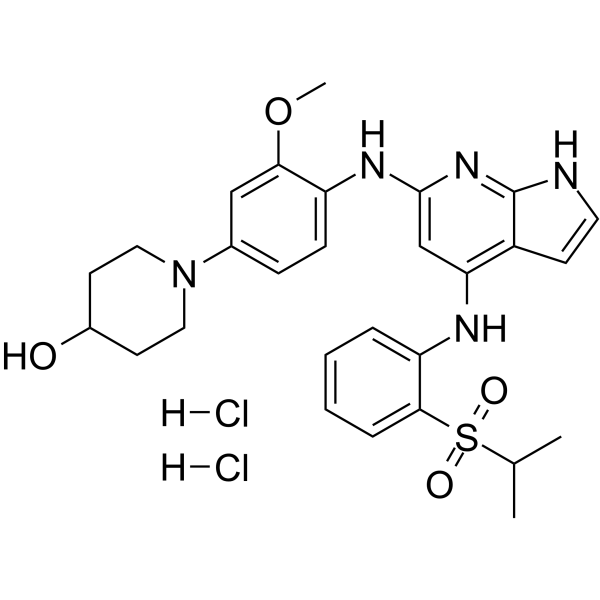
- HY-148384
-
|
|
Others
|
Cancer
|
|
UHMCP1 is a chemical probe of U2AF homology motifs (UHM) with a Kd of 79 μM. UHMCP1 prevents the SF3b155/U2AF65 interaction, impacts RNA splicing and cell viability. UHMCP1 has potential anticancer properties .
|
-
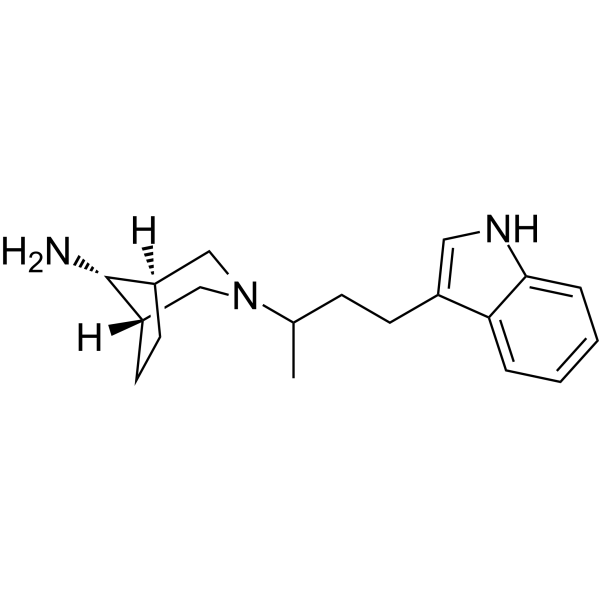
- HY-116213
-
-
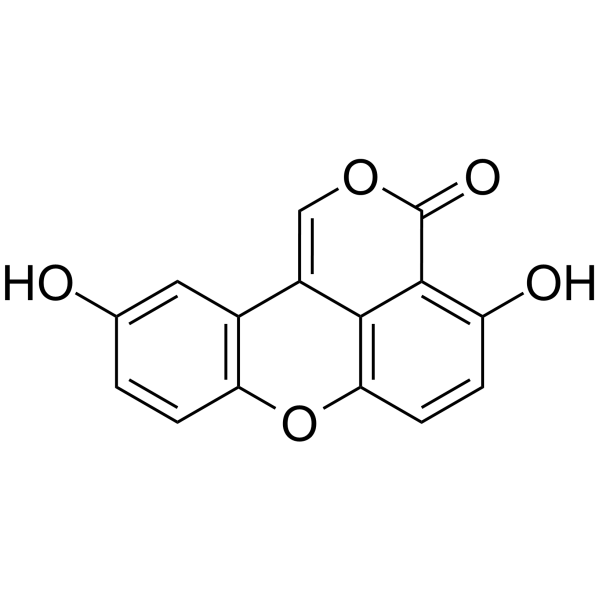
- HY-17593
-
|
CEM-101; OP-1068
|
Bacterial
Antibiotic
|
Infection
|
|
Solithromycin (CEM-101) is an orally bioavailable, effective antimicrobial agent, with IC50s for inhibition of cell viability, protein synthesis, and growth rate are 7.5 ng/mL, 40 ng/mL, and 125 ng/mL for Streptococcus pneumonia, Staphylococcus aureus, and Haemophilus influenzae, respectively. Solithromycin binds to the large 50S subunit of the ribosome and inhibits protein biosynthesis .
|
-
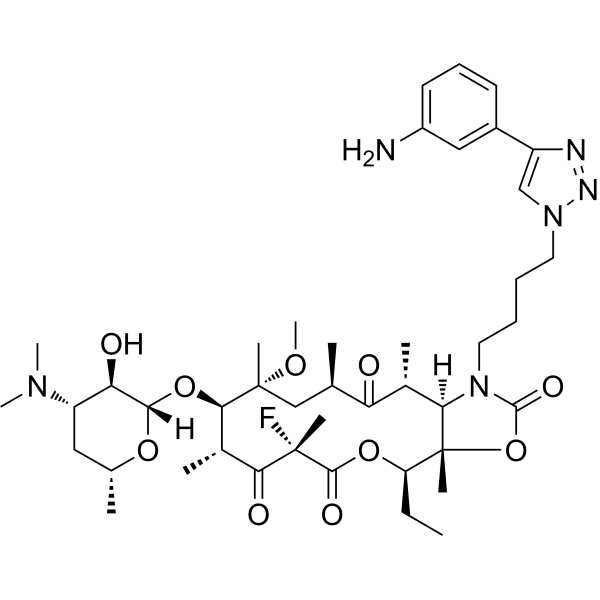
- HY-16981
-
|
|
CXCR
|
Inflammation/Immunology
|
|
SB-332235 is a potent, orally active nonpeptide CXCR2 antagonist, with an IC50 of 7.7 nM. SB-332235 displays 285-fold selectivity for CXCR2 over CXCR1. SB-332235 inhibits acute and chronic models of arthritis in the rabbit. SB-332235 inhibits viability of AML cells .
|
-
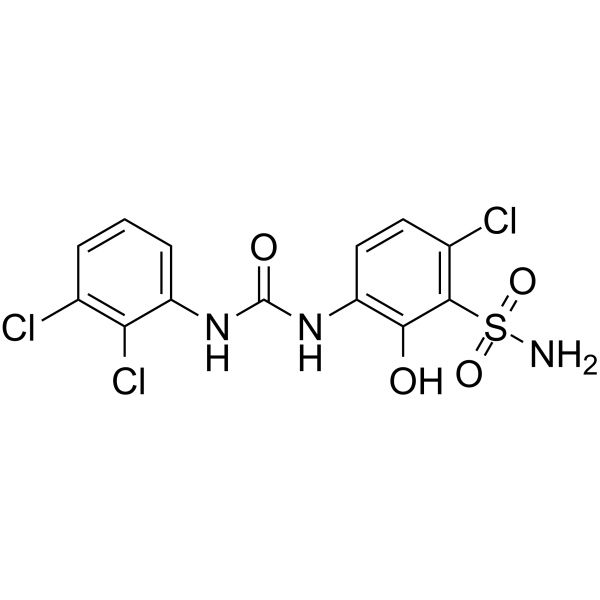
- HY-129119
-
|
|
Akt
Caspase
|
Cancer
|
|
Akt1/Akt2-IN-2 (compound 7) is an allosteric dual Akt1 and Akt2 inhibitor (IC50=138 nM and 212 nM, respectively). Akt1/Akt2-IN-2 increases activity of caspase-3, and inhibits viability of a number of tumor cells .
|
-

- HY-161341
-
|
|
Others
|
Cancer
|
|
β-Glucuronidase responsive conjugate 1 (compound 3) is a well-balanced photosensitizer which has photodynamic activity. β-Glucuronidase responsive conjugate 1 inhibits T-24 cell viability and growth with an IC50 of 0.2 μM. β-Glucuronidase responsive conjugate 1 can used to study bladder cancers .
|
-
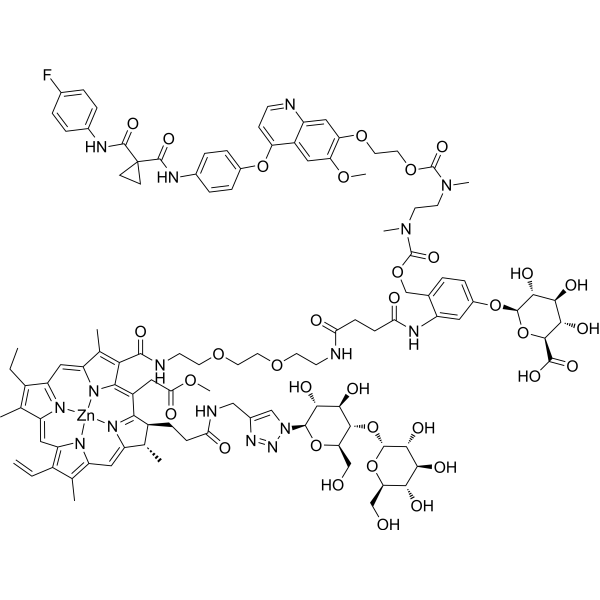
- HY-122182
-
|
|
Histone Methyltransferase
Apoptosis
|
Cancer
|
|
OTS193320, a imidazo[1,2-a]pyridine compound, is a SUV39H2 methyltransferase activity inhibitor. OTS193320 decreases global histone H3 lysine 9 tri-methylation levels in breast cancer cells and triggers apoptotic cell death. Combination of OTS193320 with Doxorubicin (DOX; HY-15142A) results in reduction of γ-H2AX levels as well as cancer cell viability compared to a single agent OTS193320 or DOX .
|
-
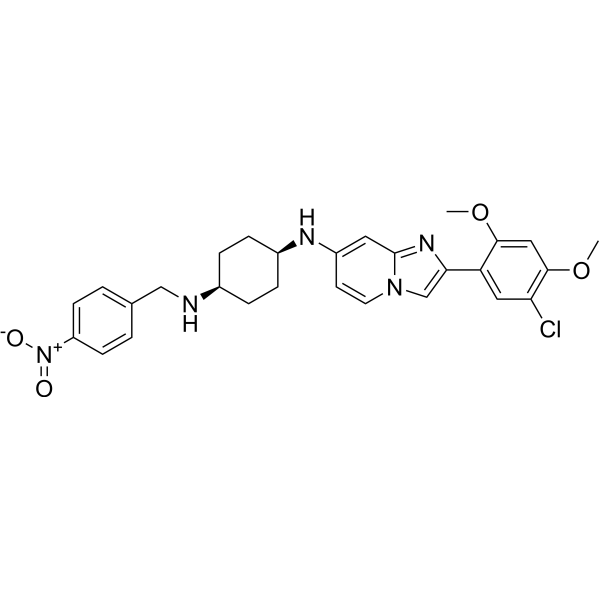
- HY-124295
-
|
|
HDAC
Akt
Apoptosis
|
Cancer
|
|
MPT0E028 is an orally active and selective HDAC inhibitor with IC50s of 53.0 nM, 106.2 nM, 29.5 nM for HDAC1, HDAC2 and HDAC6, respectively . MPT0E028 reduces the viability of B-cell lymphomas by inducing apoptosis and possesses potent direct Akt targeting ability and reduces Akt phosphorylation in B-cell lymphoma. MPT0E028 has good anticancer activity .
|
-
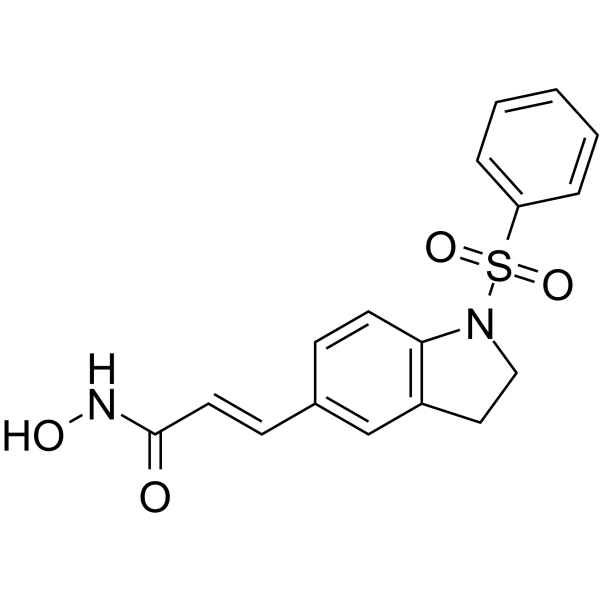
- HY-141890
-
|
|
Epigenetic Reader Domain
|
Cancer
|
|
BAZ1A-IN-1 is a potent inhibitor of BAZ1A (bromodomain-containing protein). BAZ1A-IN-1 shows a KD value of 0.52 μM against BAZ1A bromodomain. BAZ1A-IN-1 shows good anti-viability activity against cancer cell lines expressing a high level of BAZ1A, but weak or no activity against cancer cells with a low expression level of BAZ1A .
|
-
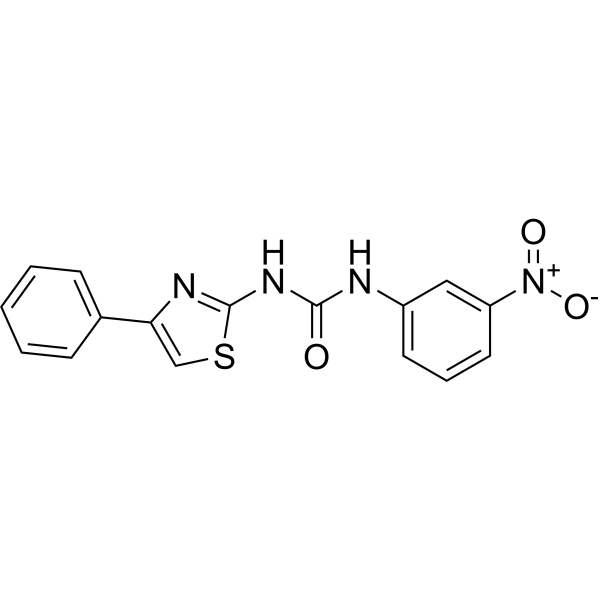
- HY-121337
-
|
R-40244
|
Apoptosis
Bcl-2 Family
|
Others
|
|
Flurochloridone (R-40244) is a selective preemergence and persistent herbicide. Flurochloridone induces endoplasmic reticulum (ER) stress and activated unfolded protein response (UPR) signaling pathways. Flurochloridone impairs cell viability and induces cytotoxicity and apoptosis mediated by ER stress via activating eIF2α-ATF4/ATF6-CHOP-Bim/Bax signaling pathways in TM4 cells .
|
-

- HY-N12606
-
|
|
Fungal
|
Infection
|
|
Neodidymelliosides A (compound 1)It is a secondary metabolite of fungi and has a significant inhibitory effect on Staphylococcus aureus and Candida albicans biofilms. Neodidymelliosides AIt also has anti-cancer activity and can inhibit KB3.1 (cervix),PC-3 (prostate),MCF-7(breast),SKOV-3 (ovary),A431 (skin )and A549 (lung )Cell viability of cell lines .
|
-
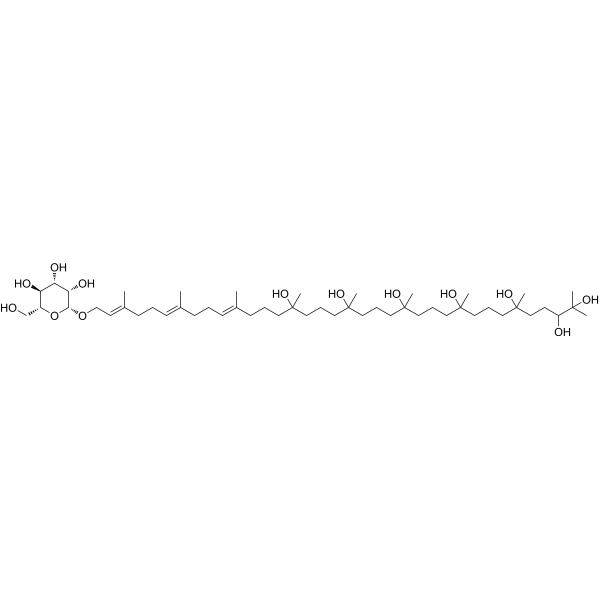
- HY-13062
-
|
Daunomycin hydrochloride; RP 13057 hydrochloride; Rubidomycin hydrochloride
|
Topoisomerase
DNA/RNA Synthesis
ADC Cytotoxin
Bacterial
Autophagy
Apoptosis
Antibiotic
|
Infection
Neurological Disease
Cancer
|
|
Daunorubicin (Daunomycin) hydrochloride is a topoisomerase II inhibitor with potent anti-tumor activity. Daunorubicin hydrochloride inhibits DNA and RNA synthesis. Daunorubicin hydrochloride is a cytotoxin that inhibits cancer cell viability and induces apoptosis and necrosis. Daunorubicin hydrochloride is also an anthracycline antibiotic. Daunorubicin hydrochloride can be used in the research of infection and variety of cancers, including leukemia, non-Hodgkin lymphomas, Ewing's sarcoma, Wilms' tumor .
|
-

- HY-13062A
-
|
Daunomycin; RP 13057; Rubidomycin
|
Topoisomerase
DNA/RNA Synthesis
ADC Cytotoxin
Autophagy
Bacterial
Antibiotic
Apoptosis
|
Infection
Neurological Disease
Cancer
|
|
Daunorubicin (Daunomycin) is a topoisomerase II inhibitor with potent anti-tumor activity. Daunorubicin inhibits DNA and RNA synthesis. Daunorubicin is a cytotoxin that inhibits cancer cell viability and induces apoptosis and necrosis. Daunorubicin is also an anthracycline antibiotic. Daunorubicin can be used in the research of infection and variety of cancers, including leukemia, non-Hodgkin lymphomas, Ewing's sarcoma, Wilms' tumor .
|
-

- HY-119358
-
|
|
Reactive Oxygen Species
Apoptosis
|
Inflammation/Immunology
|
|
Traumatic Acid is a wound healing agent and a cytokinin (phytohormone). Traumatic Acid enhances the biosynthesis of collagen in cultured human skin fibroblasts. Traumatic Acid inhibits MCF-7 breast cancer cells viability and enhances apoptosis and oxidative stress. Traumatic Acid can be used in studies of cancer, circulatory disorders (including arterial hypertension), and skin diseases associated with oxidative stress and impaired collagen biosynthesis .
|
-
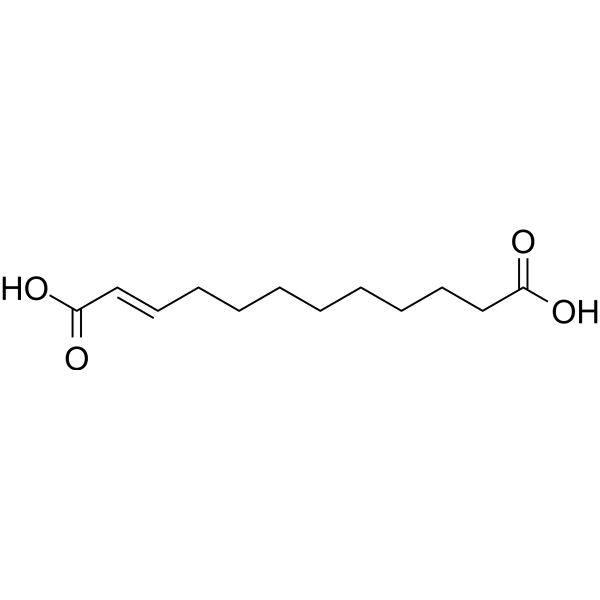
- HY-147007
-
|
|
β-catenin
Wnt
|
Cancer
|
|
β-catenin-IN-3 (compound C2) is a potent and selective β-catenin inhibitor with a KD value of 54.96 nM. β-catenin-IN-3 acts by targeting a cryptic allosteric modulation site of β-catenin. β-catenin-IN-3 can significantly reduce viability of β-catenin-driven cancer cells .
|
-
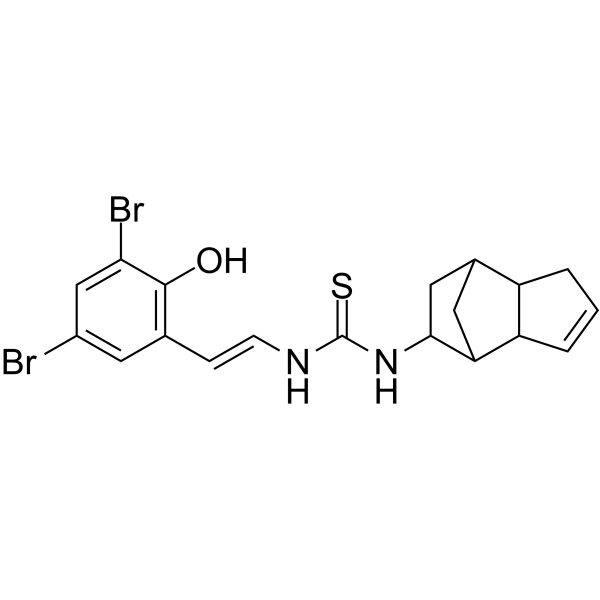
- HY-121619
-
|
|
Apoptosis
|
Inflammation/Immunology
Cancer
|
|
Jacaric acid is a conjugated linolenic acid, which inhibits viability in cells PC-3 (IC50 is 11.8 μM), LNCaP (IC50 is 2.2 μM) and DLD-1, induces apoptosis and necrosis . Jacaric acid exhibits anticaner activity against prostate cancer and adenocarcinoma . Jacaric acid exhibits immunomodulating activity in murine peritoneal macrophages as an immunopotentiator . Jacaric acid is orally active.
|
-
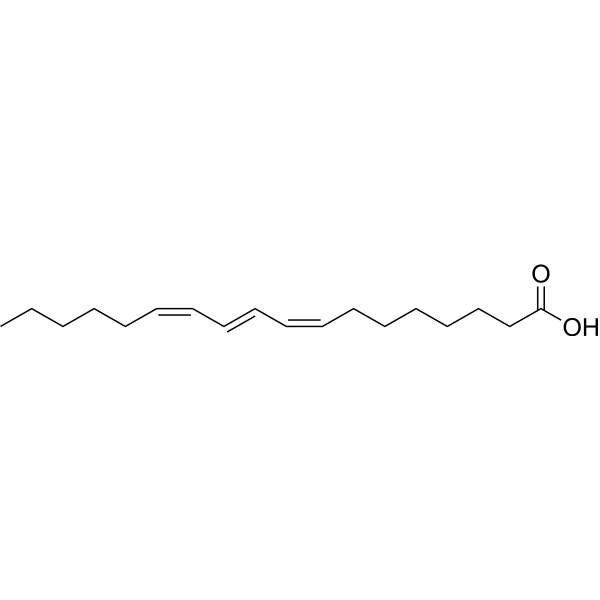
- HY-B0852
-
|
|
Cytochrome P450
Fungal
Apoptosis
|
Infection
|
|
Tebuconazole is an orally active agricultural azole fungicide which can also inhibit CYP51 with IC50s of 0.9 and 1.3 μM for Candida albicans CYP51 (CaCYP51) and truncated Homo sapiens CYP51 (Δ60HsCYP51), respectively. Tebuconazole induces lipid accumulation and oxidative stress in HepG2 Cells. Tebuconazole decreases MAC-T cells viability and proliferation, induces ER-stress-mediated apoptosis and increases oxidative stress levels in MAC-T cells .
|
-

- HY-153234
-
|
|
CD19
Liposome
|
Inflammation/Immunology
Cancer
|
|
CD19 car circRNA-LNP is a lipid nanoparticle (LNP) containing CD19 car circRNA, suitable for detection of RNA delivery, translation efficiency, cell viability, etc. CD19 car circRNA can be used in chimeric antigen receptor T cell immunotherapy (CAR-CD19). The CD19 car is a chimeric antigen receptor. Among them, CD19 is a CD molecule expressed by B cells (i.e. leukocyte differentiation antigen), an important membrane antigen involved in B cell proliferation, differentiation, activation and antibody production, and can also promote BCR signal transduction .
|
-

- HY-153233
-
|
|
CD19
Liposome
|
Inflammation/Immunology
Cancer
|
|
CD19 car mRNA-LNP is a lipid nanoparticle (LNP) containing CD19 car mRNA, suitable for detection of RNA delivery, translation efficiency, cell viability, etc. CD19 car mRNA can be used in chimeric antigen receptor T cell immunotherapy (CAR-CD19). The CD19 car is a chimeric antigen receptor. Among them, CD19 is a CD molecule expressed by B cells (i.e. leukocyte differentiation antigen), an important membrane antigen involved in B cell proliferation, differentiation, activation and antibody production, and can also promote BCR signal transduction .
|
-

- HY-144899
-
|
|
Notch
|
Cancer
|
|
ASR-490 reduces the viability of HCT116 and SW620 cells by downregulating Notch1 signaling. ASR-490 overcomes Notch1 overexpression and inhibits the growth of HCT/Notch1 transfectants. ASR-490 inhibits the tumor growth in control (pCMV/HCT116) and Notch1/HCT116 in xenotransplanted mice .
|
-
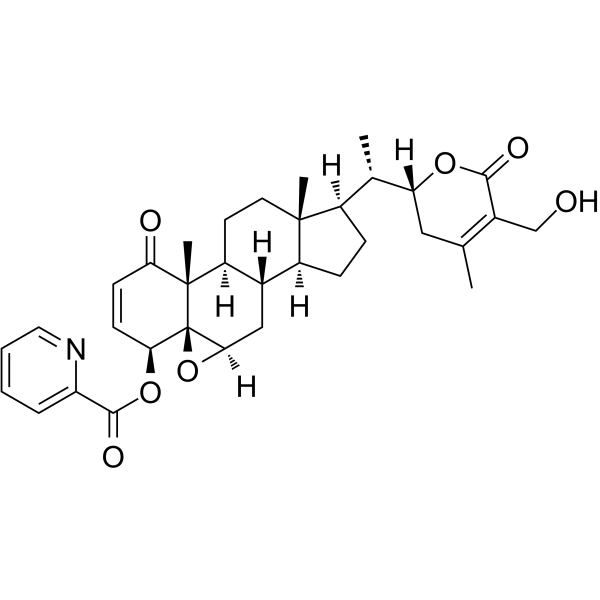
- HY-153083
-
|
|
SARS-CoV
|
Infection
|
|
COVID-19 Spike Protein mRNA will express COVID-19 spike protein, and suitable for detection of RNA delivery, translation efficiency, cell viability, etc. COVID-19 spike protein is the novel coronavirus pneumonia spike protein located on the membrane surface. COVID-19 spike protein undertakes the functions of virus binding to host cell membrane receptors and membrane fusion, thereby mediating the entry of COVID-19 virus into cells. COVID-19 spike protein is an important site of action for host neutralizing antibodies and a key target for vaccine design .
|
-
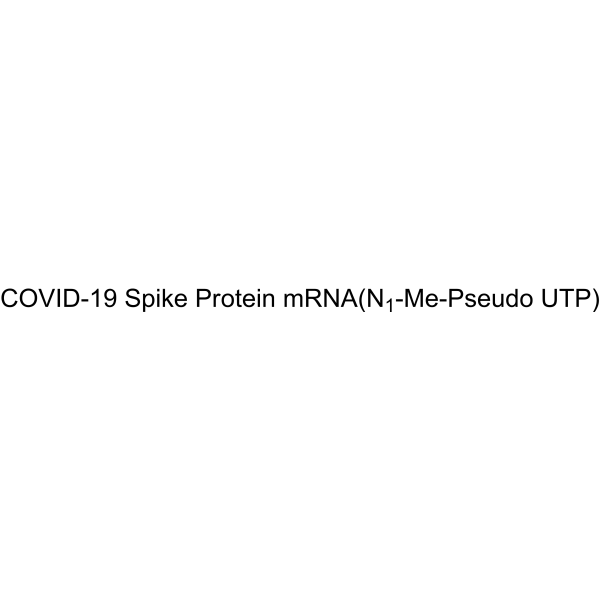
- HY-131592
-
|
|
Apoptosis
Keap1-Nrf2
|
Neurological Disease
Inflammation/Immunology
Cancer
|
|
Tricetin is a potent competitive inhibitor of the Keap1-Nrf2 Protein Protein Interaction (PPI). Tricetin protects against 6-OHDA-induced neurotoxicity in Parkinson's disease model by activating Nrf2/HO-1 signaling pathway and preventing mitochondria-dependent apoptosis pathway .
|
-

- HY-155391
-
|
|
Carbonic Anhydrase
P-glycoprotein
Wnt
β-catenin
|
Cancer
|
|
hCA/Wnt/β-catenin-IN-1 (Compd 15) is an inhibitor of hCA (Ki: 33.6, 24.1, 6.8 nM for hCA II, hCA IX, hCA XII). hCA/Wnt/β-catenin-IN-1 reduces P-gp activity. hCA/Wnt/β-catenin-IN-1 also inhibits Wnt/β-catenin signaling pathway. hCA/Wnt/β-catenin-IN-1 inhibits cancer cell viability, including the NCI/ADR-RES DOX-resistant cell line .
|
-

- HY-111522
-
|
|
Sirtuin
c-Myc
|
Cancer
|
|
RK-9123016 is a potent inhibitor of SIRT2. RK-9123016 inhibits the enzymatic activity of SIRT2 with an IC50 value of 0.18 µM but not other human sirtuin members including SIRT1 and SIRT3 at 100 µM. RK-9123016 increases the acetylation level of eukaryotic translation initiation factor 5A (eIF5A), a physiological substrate of SIRT2, and reduces cell viability of human breast cancer cells accompanied with a decrease in c-Myc expression .
|
-
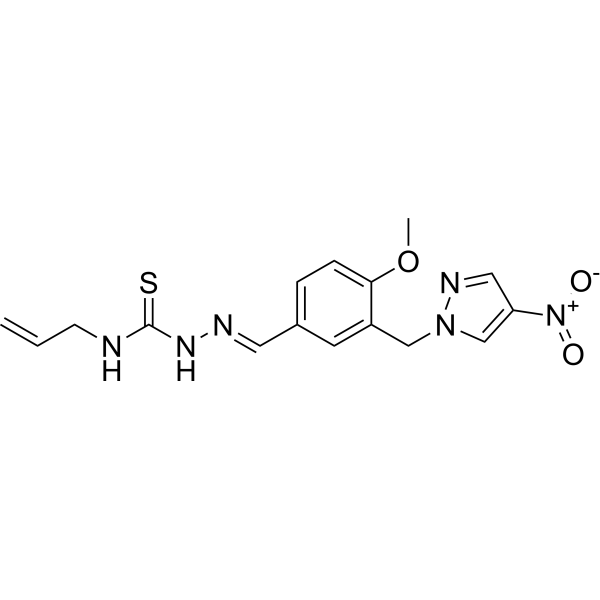
- HY-N4215
-
|
|
Others
|
Inflammation/Immunology
|
|
11(α)-Methoxysaikosaponin F is a triterpenoid saponin isolated from Bupleurum marginatum Wall.ex DC(ZYCH) which is a promising therapeutic for liver fibrosis. 11(α)-Methoxysaikosaponin F has an IC50 of 387.7 nM with viability of hepatic stellate cells-T6 (HSCs-T6). Triterpenoid saponins have numerous targets, important network positions, and strong inhibitory activity .
|
-
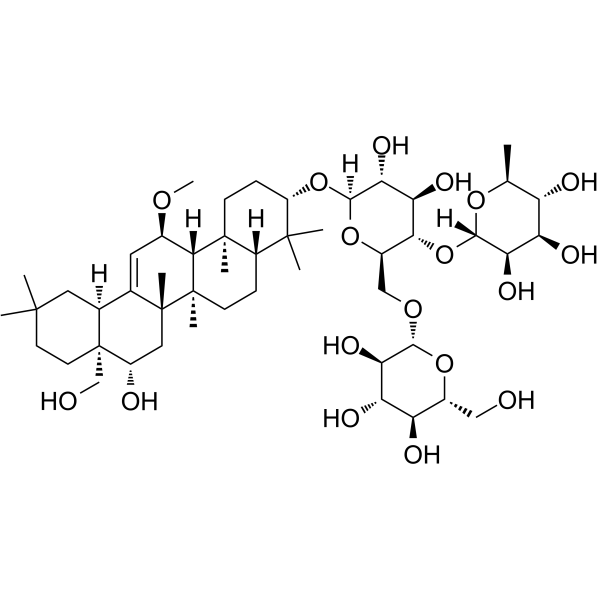
- HY-108298
-
|
PP 5; Perfluorodecahydronaphthalene
|
Others
|
Others
|
|
Perfluorodecalin liquids are largrly used in vitreoretinal surgery. Perfluorodecalin with tamponade lasting more than two days is detrimental to the retina in the case of rabbit. Perfluorodecalin can be used for the research of giant retinal tears . Perfluorodecalin is a non-toxic, non-flammable, thermally stable, non-bio-accumulating O2-carrier and used as artificial blood . Perfluorodecalin enhances bone regeneration and cell viability .
|
-
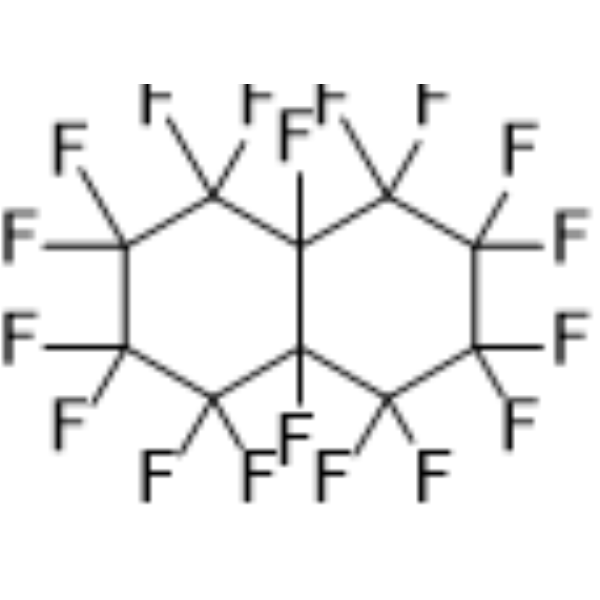
- HY-108876
-
|
Daunomycin(citrate); RP 13057(citrate); Rubidomycin(citrate)
|
Topoisomerase
DNA/RNA Synthesis
ADC Cytotoxin
Autophagy
Bacterial
Antibiotic
Apoptosis
|
Infection
Neurological Disease
Cancer
|
|
Daunorubicin (Daunomycin) citrate is a topoisomerase II inhibitor with potent anti-tumor activity. Daunorubicin citrate inhibits DNA and RNA synthesis. Daunorubicin citrate is a cytotoxin that inhibits cancer cell viability and induces apoptosis and necrosis. Daunorubicin citrate is also an anthracycline antibiotic. Daunorubicin citrate can be used in the research of infection and variety of cancers, including leukemia, non-Hodgkin lymphomas, Ewing's sarcoma, Wilms' tumor .
|
-

- HY-147504
-
|
|
Apoptosis
Caspase
Bcl-2 Family
|
Cancer
|
|
Anticancer agent 63 (compound 3h) shows active in reducing the viability of different cancer cell lines, including SW480, HeLa, A549 and MCF-7, with IC50 values at 24 h of 4.9, 11.5, 9.4, and 3.4 μM, respectively. Anticancer agent 63 induce apoptosis in MCF-7 cells via down-regulating the expression of Bcl-2 and up-regulating the expression of IL-2 and Caspase-3. Anticancer agent 63 also shows antioxidant activity .
|
-
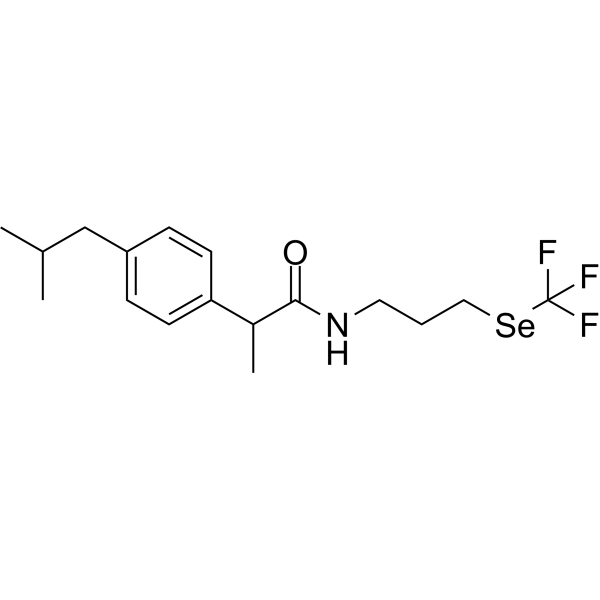
- HY-N0674A
-
|
13-Methylpalmatine chloride
|
Bcl-2 Family
Caspase
PARP
p38 MAPK
Parasite
Autophagy
|
Infection
Cancer
|
|
Dehydrocorydaline chloride (13-Methylpalmatine chloride) is an alkaloid that regulates protein expression of Bax, Bcl-2; activates caspase-7, caspase-8, and inactivates PARP . Dehydrocorydaline chloride elevates p38 MAPK activation. Anti-inflammatory and anti-cancer activities . Dehydrocorydaline chloride shows strong anti-malarial effects (IC50 =38 nM), and low cytotoxicity (cell viability > 90%) using P. falciparum 3D7 strain .
|
-
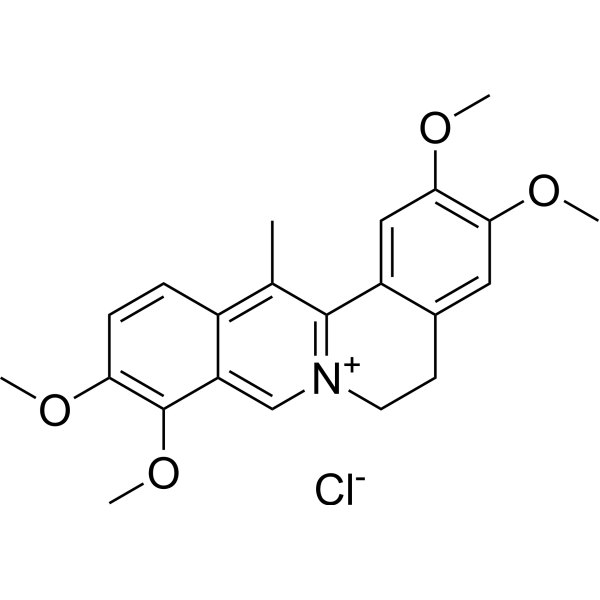
- HY-153626
-
|
|
Bacterial
Antibiotic
|
Infection
Inflammation/Immunology
|
|
Chlamydia pneumoniae-IN-1 (compound 55), a benzimidazole, shows high activity against the bacterium. Chlamydia pneumoniae-IN-1 has 99% inhibition of C. pneumoniae Growth at 10 μM, and has 95% inhibition effect on the viability of the host cells at 10 μM. Chlamydia pneumoniae-IN-1 inhibits the growth of the CV-6 strain with a MIC of 12.6 μM. Chlamydia pneumoniae-IN-1 has antichlamydial efficiency .
|
-
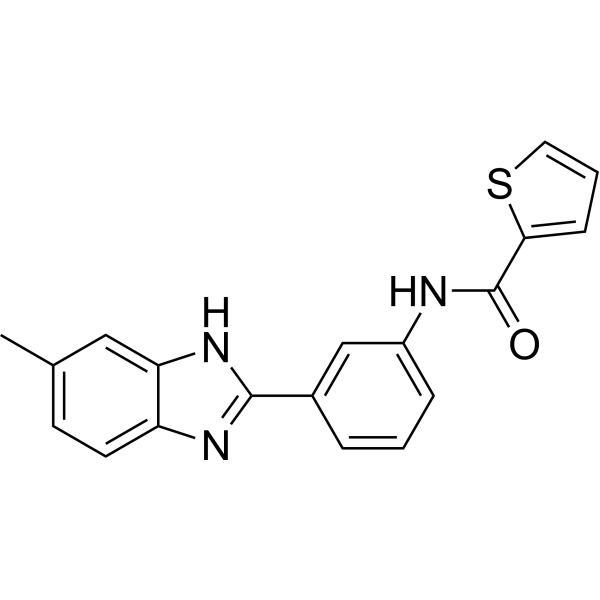
- HY-B0852R
-
|
|
Cytochrome P450
Fungal
Apoptosis
|
Infection
|
|
Tebuconazole (Standard) is the analytical standard of Tebuconazole. This product is intended for research and analytical applications. Tebuconazole is an orally active agricultural azole fungicide which can also inhibit CYP51 with IC50s of 0.9 and 1.3 μM for Candida albicans CYP51 (CaCYP51) and truncated Homo sapiens CYP51 (Δ60HsCYP51), respectively. Tebuconazole induces lipid accumulation and oxidative stress in HepG2 Cells. Tebuconazole decreases MAC-T cells viability and proliferation, induces ER-stress-mediated apoptosis and increases oxidative stress levels in MAC-T cells .
|
-

- HY-D0093
-
|
EthD-1
|
DNA Stain
|
Others
|
|
Ethidium homodimer (EthD-1) is a high-affinity fluorescent nucleic acid dye commonly used to stain mammals, bacteria, yeast, and fungi. Ethidium homodimer binds to DNA or RNA, enhancing fluorescence more than 30 times. The Ethidium homodimer has a strong positive charge, so it cannot cross cell membranes and stain living cells; But the Ethidium homodimer can cross the disordered region of the dead cell membrane to reach the nucleus and embed the DNA double strand to produce red fluorescence. Therefore, Ethidium homodimer is a relatively sensitive nucleic acid stain that can accurately detect nucleic acids in solution or in decomposing cells. Ethidium homodimer binds DNA, Ex/Em=528/617 nm .
|
-

- HY-N0674
-
|
13-Methylpalmatine
|
Bcl-2 Family
Caspase
PARP
p38 MAPK
Parasite
Autophagy
|
Infection
Cancer
|
|
Dehydrocorydaline (13-Methylpalmatine) is an alkaloid that regulates protein expression of Bax, Bcl-2; activates caspase-7, caspase-8, and inactivates PARP . Dehydrocorydaline elevates p38 MAPK activation. Anti-inflammatory and anti-cancer activities . Dehydrocorydaline shows strong anti-malarial effects (IC50=38 nM), and low cytotoxicity (cell viability > 90%) using P. falciparum 3D7 strain .
|
-

- HY-N0674B
-
|
13-Methylpalmatine (hydroxyl)
|
Bcl-2 Family
Caspase
PARP
p38 MAPK
Parasite
Autophagy
|
Infection
Inflammation/Immunology
Cancer
|
|
Dehydrocorydaline (13-Methylpalmatine) hydroxyl is an alkaloid that regulates protein expression of Bax, Bcl-2; activates caspase-7, caspase-8, and inactivates PARP. Dehydrocorydaline hydroxyl elevates p38 MAPK activation. Anti-inflammatory and anti-cancer activities. Dehydrocorydaline hydroxyl shows strong anti-malarial effects (IC50=38 nM), and low cytotoxicity (cell viability > 90%) using P. falciparum 3D7 strain.
|
-
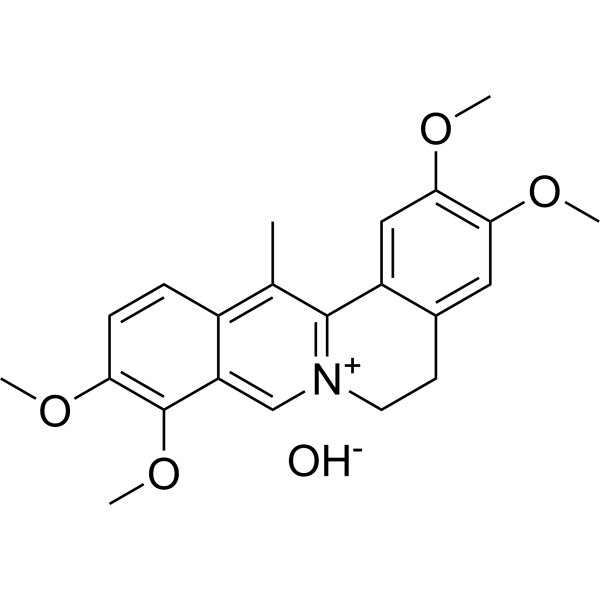
- HY-155197
-
|
|
Microtubule/Tubulin
Estrogen Receptor/ERR
|
Cancer
|
|
ER degrader 7 (Compound 35t) is an ERα and ERβ degrader. ER degrader 7 inhibits tubulin polymerization. ER degrader 7 inhibits cell viability with IC50s of 0.06, 2.56, 15.84, 1.59, 1.67, 1.37 μM for MCF-7, T47D, MCF-10A, LCC2, T47D D538G, and T47D Y537S cells respectively. ER degrader 7 also inhibits breast cancer tumor growth .
|
-
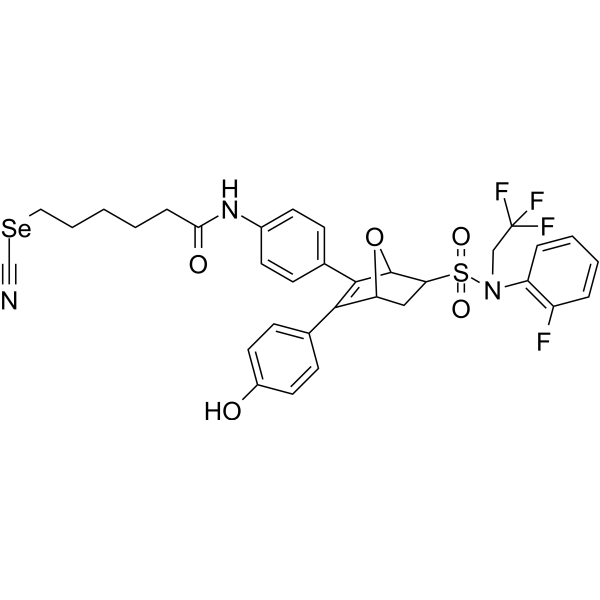
- HY-N4238
-
|
13-Methylpalmatine nitrate
|
Bcl-2 Family
Caspase
PARP
p38 MAPK
Parasite
Autophagy
|
Infection
Cancer
|
|
Dehydrocorydaline nitrate (13-Methylpalmatine nitrate) is an alkaloid. Dehydrocorydaline regulates protein expression of Bax, Bcl-2; activates caspase-7, caspase-8, and inactivates PARP . Dehydrocorydaline nitrate elevates p38 MAPK activation. Anti-inflammatory and anti-cancer activities. . Dehydrocorydaline nitrate shows strong anti-malarial effects (IC50 =38 nM), and low cytotoxicity (cell viability > 90%) using P. falciparum 3D7 strain .
|
-
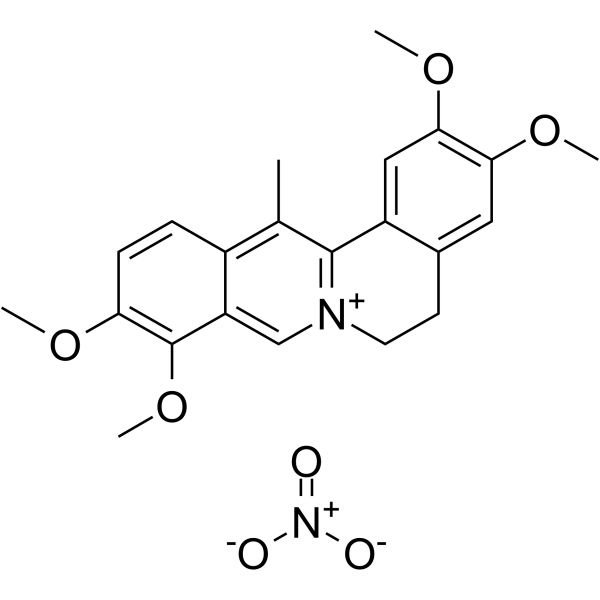
- HY-118119
-
|
|
PGE synthase
|
Cancer
|
|
CAY10526 is a specific microsomal PGE2 synthase-1 (mPGES1) inhibitor. CAY10526 inhibits PGE2 production through the selective modulation of mPGES1 expression but does not affect COX-2. CAY10526 significantly suppresses tumor growth and increases apoptosis in melanoma xenografts. CAY10526 reduces BCL-2 and BCL-XL (anti-apoptotic) protein levels and increases BAX and BAK (pro-apoptotic) as well as cleaved caspase 3 levels. CAY10526 inhibits cell viability (IC50<5 μM) in three melanoma cell lines expressing mPGES1 .
|
-
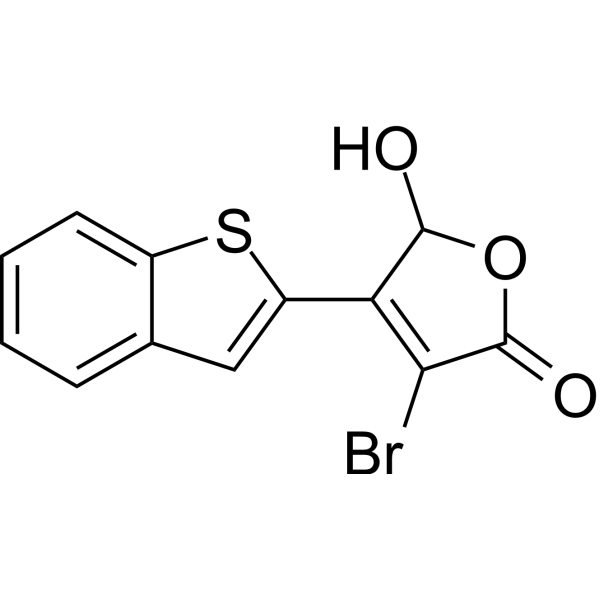
- HY-157996
-
|
|
c-Fms
|
Neurological Disease
|
|
CSF1R-IN-21 (compound 7e) is a CSF-1R Inhibitor with an IC50 value of 31 nM. CSF1R-IN-21 inhibits CSF-1R auto-phosphorylation and can be used for the research of neurodegenerative diseases .
|
-
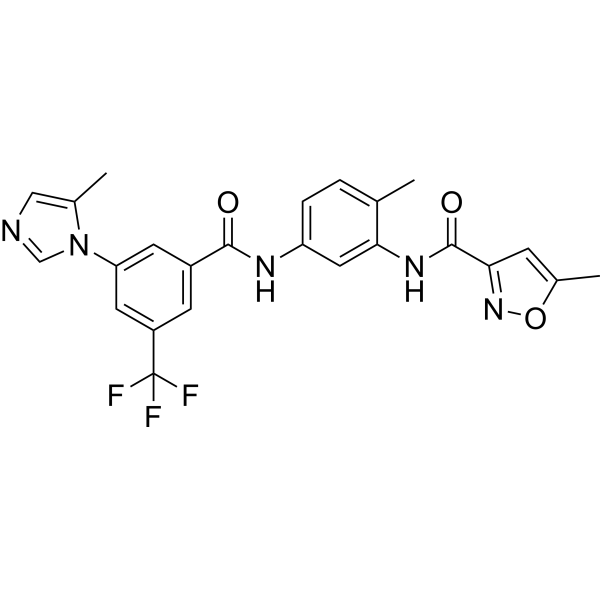
- HY-N6954
-
|
|
ATM/ATR
STAT
CDK
|
Cancer
|
|
Garcinone C, a xanthone derivative, is a natural compound extracted from Garcinia oblongifolia that is used as an anti-inflammatory, astringency and granulation-promoting medicine, and has potential cytotoxic effects on certain cancers. Garcinone C stimulates the expression levels of ATR and 4E-BP1, while efficiently inhibiting the expression levels of cyclin B1, cyclin D1, cyclin E2, cdc2, Stat3 and CDK7. Garcinone C significantly inhibits cell viability of the human Nasopharyngeal carcinoma (NPC) cell lines CNE1, CNE2, HK1 and HONE1 in a time‑ and dose‑dependent manner .
|
-
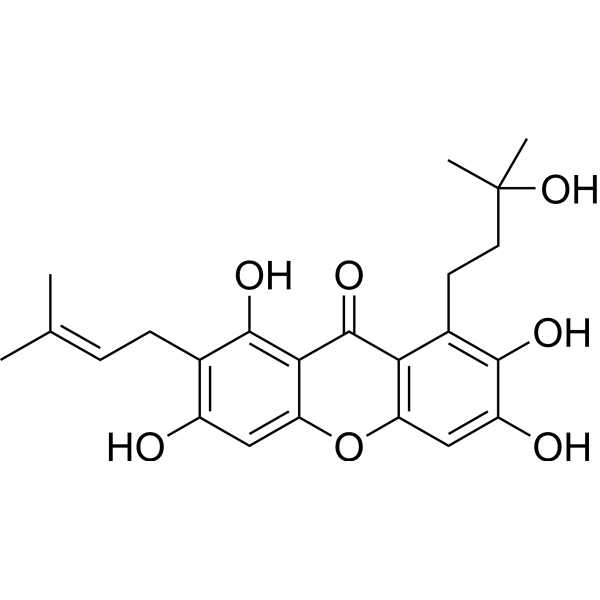
- HY-N0457
-
|
Cichoric acid; Dicaffeoyltartaric acid
|
Reactive Oxygen Species
Apoptosis
|
Metabolic Disease
Inflammation/Immunology
|
|
Chicoric acid (Cichoric acid), an orally active dicaffeyltartaric acid, induces reactive oxygen species (ROS) generation. Chicoric acid inhibits cell viability and induces mitochondria-dependent apoptosis in 3T3-L1 preadipocytes through ROS-mediated PI3K/Akt and MAPK signaling pathways. Chicoric acid increases glucose uptake, improves insulin resistance, and attenuates glucosamine-induced inflammation. Chicoric acid has antidiabetic properties and antioxidant, anti-inflammatory effects .
|
-

- HY-130272
-
|
|
Others
|
Cardiovascular Disease
|
|
Anti-MI/R injury agent 1 (compound 18), a Panaxatriol derivative, is an orally active, potent anti-myocardial ischemia/reperfusion (anti-MI/R) injury agent. Anti-MI/R injury agent 1 enhances oxygen-glucose deprivation and reperfusion (OGD/R)-induced cardiomyocyte injury cell viability. Anti-MI/R injury agent 1 can markedly reduce myocardial infarction size, decrease circulating cardiac troponin I (cTnI) leakage, and alleviate cardiac tissue damage in the rats .
|
-
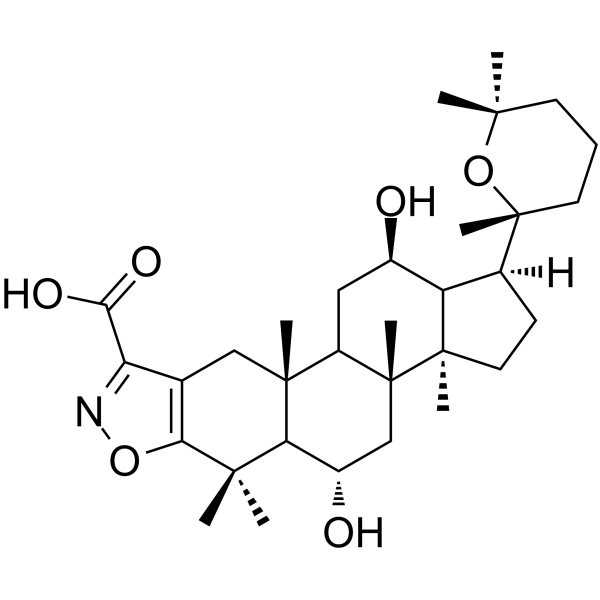
- HY-P2265
-
|
|
Ras
|
Cancer
|
|
SAH-SOS1A is a peptide-based SOS1/KRAS protein interaction inhibitor. SAH-SOS1A binds to wild-type and mutant KRAS (G12D, G12V, G12C, G12S, and Q61H) with nanomolar affinity (EC50=106-175 nM), directly and independently blocks nucleotide association, impairs KRAS-driven cancer cell viability, and exerts its effects by on-mechanism blockade of the ERK-MAPK phosphosignaling cascade downstream of KRAS .
|
-
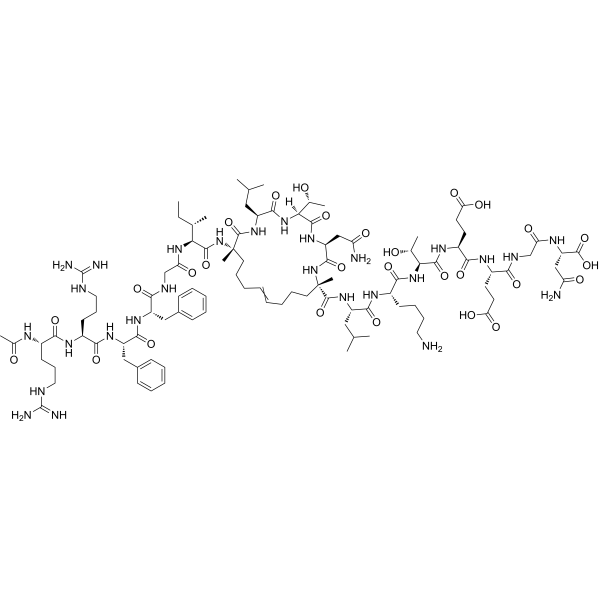
- HY-W040144
-
|
|
Fluorescent Dye
|
Others
|
|
Bromocresol green is a pH-sensitive triphenylmethane dye commonly used for the determination of protein and albumin in serum. Bromocresol green is a bio-based dye with a yellow-green to blue-green color. Bromocresol green turns yellow (λmax=435 nm, protonated form) when placed in acidic solution (e.g. pH=4.15), and turns blue in basic solution (λmax=615 nm, deprotonated form). Bromocresol green is widely used as a pH indicator in the field of biochemical analysis. In addition, Bromocresol green is also used to detect the concentration of molecules such as creatinine, and to judge the viability of cells .
|
-
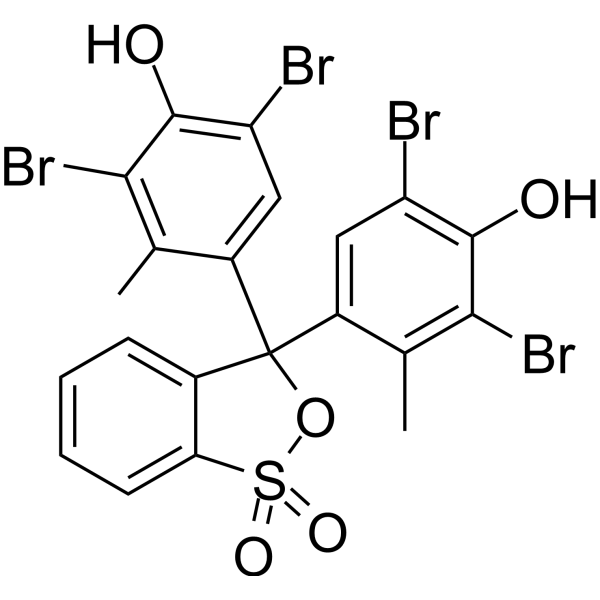
- HY-132301
-
|
MCT4-IN-1
|
Monocarboxylate Transporter
|
Cancer
|
|
MSC-4381 (MCT4-IN-1) is an orally active and selective monocarboxylate transporter 4 (MCT4/SLC16A3) inhibitor with an IC50 of 77 nM and a Ki of 11 nM. MSC-4381 targets to the cytosolic domain of MCT4. MSC-4381 results in lactate efflux inhibition and reduction of cellular viability in MCT4 high expressing cells. MSC-4381 has the potential for MCT4 transporter inhibition research . MSC-4381 is a click chemistry reagent, it contains an Alkyne group and can undergo copper-catalyzed azide-alkyne cycloaddition (CuAAc) with molecules containing Azide groups.
|
-

- HY-P2265A
-
|
|
Ras
|
Cancer
|
|
SAH-SOS1A TFA is a peptide-based SOS1/KRAS protein interaction inhibitor. SAH-SOS1A TFA binds to wild-type and mutant KRAS (G12D, G12V, G12C, G12S, and Q61H) with nanomolar affinity (EC50=106-175 nM). SAH-SOS1A TFA directly and independently blocks nucleotide association. SAH-SOS1A TFA impairs KRAS-driven cancer cell viability and exerts its effects by on-mechanism blockade of the ERK-MAPK phosphosignaling cascade downstream of KRAS .
|
-

- HY-149763
-
|
|
Amyloid-β
|
Neurological Disease
|
|
Aβ42 agonist-1 (compound 7a) is a small molecule compound that can promote Aβ42 aggregation. Aβ42 agonist-1 can interact with Aβ42 oligomers and pentamers to promote nontoxic aggregate self-assembly and rapid fibril formation. Aβ42 agonist-1 prevents Aβ42-induced cytotoxicity in HT22 hippocampal neuronal cells .
|
-

- HY-149764
-
|
|
Amyloid-β
|
Neurological Disease
|
|
Aβ42 agonist-2 (compound 7b) is a small molecule compound that can promote Aβ42 aggregation. Aβ42 agonist-2 can interact with Aβ42 oligomers and pentamers to promote nontoxic aggregate self-assembly and rapid fibril formation. Aβ42 agonist-2 prevents Aβ42-induced cytotoxicity in HT22 hippocampal neuronal cells .
|
-
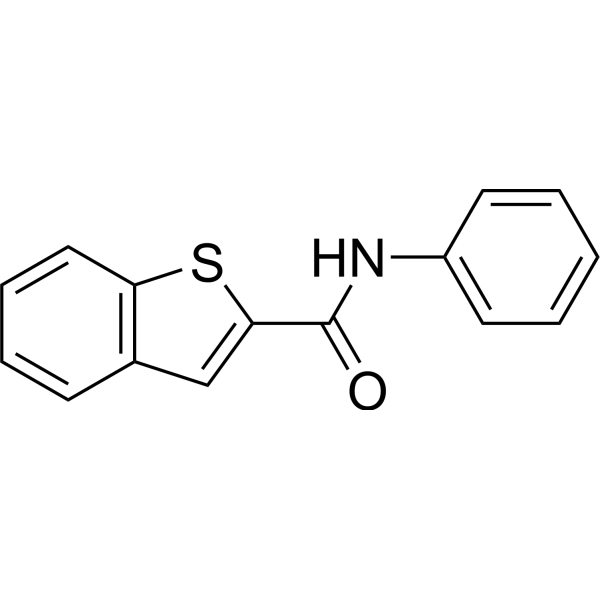
- HY-B0263
-
-
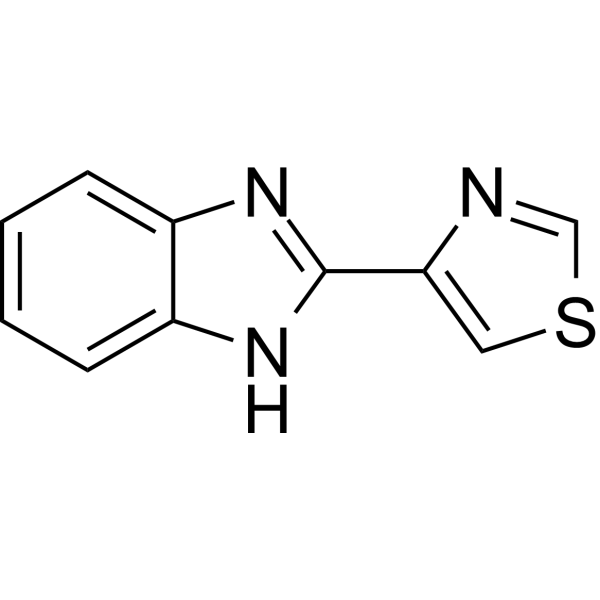
- HY-161063
-
-
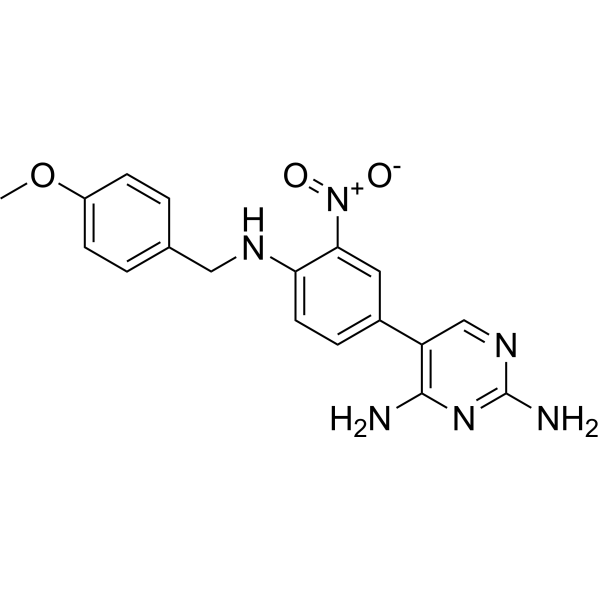
- HY-161064
-
|
|
Dihydrofolate reductase (DHFR)
|
Cancer
|
|
DHFR-IN-15 (compound 34) is a dihydrofolate reductase (DHFR) inhibitor with potential anticancer activity. DHFR-IN-15 effectively binds to DHFR in cells, reducing DHFR levels to 10 nM .
|
-
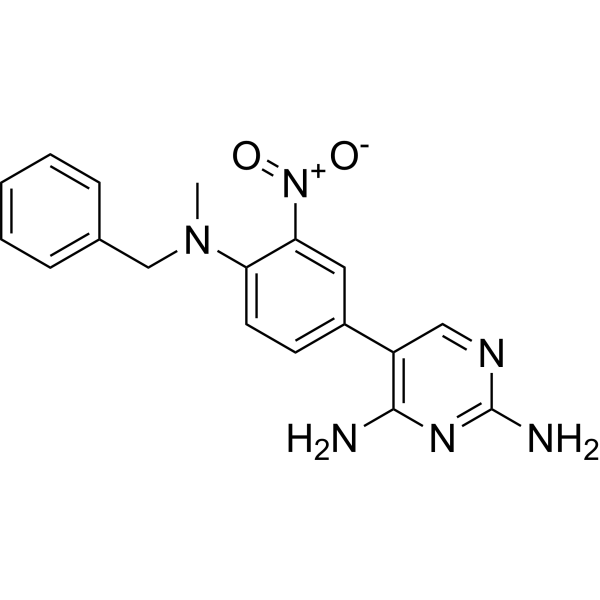
| Cat. No. |
Product Name |
Type |
-
- HY-D0163
-
|
|
DNA Stain
|
|
Methyl Green is a potent fluorescent dye. Methyl Green is a DNA stains of cells and electrophoretic gels. Methyl Green can be used as a stain for direct measuring of viability by both microscopy and flow cytometry, with peaks at 633 and 677 nm .
|
-
- HY-D0950A
-
|
|
DNA Stain
|
|
Methyl Green zinc chloride is a potent fluorescent dye. Methyl Green zinc chloride is a DNA stains of cells and electrophoretic gels. Methyl Green zinc chloride can be used as direct measuring of viability by both microscopy and flow cytometry, with peaks at 633 and 677 nm .
|
-
- HY-D0830
-
|
Fluorexon tetraethyl ester
|
Fluorescent Dyes/Probes
|
|
Calcein tetraethyl ester is a fluorescent dye, is used in biology as it can be transported through the cellular membrane into live cells, which makes it useful for testing of cell viability and for short-term labeling of cells.
|
-
- HY-111391
-
|
Diazoresorcinol sodium
|
Fluorescent Dyes/Probes
|
|
Resazurin sodium (Diazoresorcinol sodium) is commonly used to measure bacterial and eukaryotic cell viability through its reduction to the fluorescent product resorufin.
|
-
- HY-118540
-
|
Diazoresorcinol
|
Fluorescent Dyes/Probes
|
|
Resazurin (Diazoresorcinol) is a water-soluble, non-toxic, stable, membrane-permeable blue non-fluorescent dye (faintly fluorescent). Resazurin is used as a redox indicator, can be reduced to pink, highly fluorescent Resorufin (Ex=530-560 nm, Em=590 nm) in living cells. Resazurin can be used for the detection of cell viability, toxicity, proliferation, migration and invasion in cells (human, plant and animal, bacterial and fungal) .
|
-
- HY-D0041
-
Calcein-AM
Maximum Cited Publications
37 Publications Verification
Calcein acetoxymethyl ester
|
Fluorescent Dyes/Probes
|
|
Calcein AM, has cell membrane permeability and can easily enter the cell. Calcein AM has no fluorescence and is hydrolyzed by endogenous esterase in the cell to produce polar molecule Calcein (Calcein), which has strong negative charge and cannot permeate the cell membrane. Calcein can emit strong green fluorescence, so it is often used with Propidium Iodide for cell viability/virulence detection, excitation/emission wavelength: 494/515 nm .
|
-
- HY-W094758A
-
|
|
Fluorescent Dyes/Probes
|
|
4-Di-1-ASP is a styryl dye used to stain glioma cells in living brain tissue for analysis of cell structure, viability, proliferation and endocytosis, cytokinesis and phagocytosis, as well as for observation of mitochondrial structures in living cells. 4-Di-1-ASP fluoresces green when imaged microscopically (λex /λem = 475/606 nm) .
|
-
- HY-D0970
-
|
Direct Blue 14
|
Dyes
|
|
Diphenyl Blue (Trypan Blue) is a cell active dye, the most commonly used dye for the identification of dead cells, of en used to test cell membrane integrity and cell viability. Diphenyl Blue staining is one of the methods for tissue and cell culture. When cells are deactivated or have incomplete cell membranes, Diphenyl Blue can stain them Blue. Normal living cells with intact cell membranes reject Diphenyl blue and do not stain them blue. However, macrophages are capable of phagocytosis of Diphenyl Blue, so it can be used as a living stain for macrophages .
|
-
- HY-136976
-
WST-1
1 Publications Verification
|
Dyes
|
|
WST-1 is a kind of water-soluble tetrazolium salt. WST induces the intracellular mitochondrial dehydrogenase to conduct NADH-dependent enzyme digestion reaction, releasing the water-soluble methyl benzene product. WST-1 can be used for the detection of cell proliferation and cytotoxicity, via the determination of the light absorption value at 450 nm .
|
-
- HY-D0093
-
|
EthD-1
|
DNA Stain
|
|
Ethidium homodimer (EthD-1) is a high-affinity fluorescent nucleic acid dye commonly used to stain mammals, bacteria, yeast, and fungi. Ethidium homodimer binds to DNA or RNA, enhancing fluorescence more than 30 times. The Ethidium homodimer has a strong positive charge, so it cannot cross cell membranes and stain living cells; But the Ethidium homodimer can cross the disordered region of the dead cell membrane to reach the nucleus and embed the DNA double strand to produce red fluorescence. Therefore, Ethidium homodimer is a relatively sensitive nucleic acid stain that can accurately detect nucleic acids in solution or in decomposing cells. Ethidium homodimer binds DNA, Ex/Em=528/617 nm .
|
| Cat. No. |
Product Name |
Type |
-
- HY-153235
-
|
|
Drug Delivery
|
|
COVID-19 Spike Protein mRNA-LNP is a lipid nanoparticle (LNP) containing COVID-19 Spike Protein, suitable for detection of RNA delivery, translation efficiency, cell viability, etc. COVID-19 Spike Protein is the novel coronavirus pneumonia spike protein located on the membrane surface. COVID-19 Spike Protein undertakes the functions of virus binding to host cell membrane receptors and membrane fusion, thereby mediating the entry of COVID-19 virus into cells. COVID-19 Spike Protein is an important site of action for host neutralizing antibodies and a key target for vaccine design .
|
-
- HY-153231
-
|
|
Drug Delivery
|
|
eGFP mRNA-LNP is a lipid nanoparticle (LNP) containing eGFP mRNA, suitable for assays of RNA delivery, translation efficiency, cell viability, etc. eGFP circRNA carries Enhanced Green Fluorescent Protein (Enhanced Green Fluorescent Protein) eGFP, which will express green fluorescent protein after entering the cell. eGFP is commonly used as a reporter gene detectable by fluorescence microscopy or flow cytometry .
|
-
- HY-153232
-
|
|
Drug Delivery
|
|
eGFP circRNA-LNP is a lipid nanoparticle (LNP) containing eGFP circRNA, suitable for assays of RNA delivery, translation efficiency, cell viability, etc. eGFP circRNA carries Enhanced Green Fluorescent Protein (Enhanced Green Fluorescent Protein) eGFP, which will express green fluorescent protein after entering the cell. eGFP is commonly used as a reporter gene detectable by fluorescence microscopy or flow cytometry .
|
-
- HY-153229
-
|
|
Drug Delivery
|
|
Firefly luciferase mRNA-LNP is a lipid nanoparticle (LNP) containing Firefly luciferase mRNA, suitable for assays of RNA delivery, translation efficiency, cell viability, etc. Luciferase is commonly used as a bioluminescent reporter gene for gene regulation and function studies. Firefly Luciferase mRNA will express firefly luciferase protein after entering the cells, which is often used for promoter activity detection or dual fluorescent molecular complementation experiments. Common luciferase are firefly luciferase and sea kidney luciferase .
|
-
- HY-153230
-
|
|
Drug Delivery
|
|
Firefly luciferase circRNA-LNP is a lipid nanoparticle (LNP) containing Firefly luciferase circRNA, suitable for assays of RNA delivery, translation efficiency, cell viability, etc. Luciferase is commonly used as a bioluminescent reporter gene for gene regulation and function studies. Firefly Luciferase circRNA will express firefly luciferase protein after entering the cells, which is often used for promoter activity detection or dual fluorescent molecular complementation experiments. Common luciferase are firefly luciferase and sea kidney luciferase .
|
-
- HY-153234
-
|
|
Drug Delivery
|
|
CD19 car circRNA-LNP is a lipid nanoparticle (LNP) containing CD19 car circRNA, suitable for detection of RNA delivery, translation efficiency, cell viability, etc. CD19 car circRNA can be used in chimeric antigen receptor T cell immunotherapy (CAR-CD19). The CD19 car is a chimeric antigen receptor. Among them, CD19 is a CD molecule expressed by B cells (i.e. leukocyte differentiation antigen), an important membrane antigen involved in B cell proliferation, differentiation, activation and antibody production, and can also promote BCR signal transduction .
|
-
- HY-153233
-
|
|
Drug Delivery
|
|
CD19 car mRNA-LNP is a lipid nanoparticle (LNP) containing CD19 car mRNA, suitable for detection of RNA delivery, translation efficiency, cell viability, etc. CD19 car mRNA can be used in chimeric antigen receptor T cell immunotherapy (CAR-CD19). The CD19 car is a chimeric antigen receptor. Among them, CD19 is a CD molecule expressed by B cells (i.e. leukocyte differentiation antigen), an important membrane antigen involved in B cell proliferation, differentiation, activation and antibody production, and can also promote BCR signal transduction .
|
-
- HY-W040144
-
|
|
Biochemical Assay Reagents
|
|
Bromocresol green is a pH-sensitive triphenylmethane dye commonly used for the determination of protein and albumin in serum. Bromocresol green is a bio-based dye with a yellow-green to blue-green color. Bromocresol green turns yellow (λmax=435 nm, protonated form) when placed in acidic solution (e.g. pH=4.15), and turns blue in basic solution (λmax=615 nm, deprotonated form). Bromocresol green is widely used as a pH indicator in the field of biochemical analysis. In addition, Bromocresol green is also used to detect the concentration of molecules such as creatinine, and to judge the viability of cells .
|
| Cat. No. |
Product Name |
Target |
Research Area |
-
- HY-P5831
-
|
|
Peptides
|
Cancer
|
|
Biotin-H10 is a specific anterior gradient homolog 2 (AGR2) inhibitor with a KD of 6.4 nM. Biotin-H10 inhibits cancer cells viability .
|
-
- HY-P2576
-
|
|
Bacterial
|
Infection
|
|
Polistes mastoparan is an antimicrobial peptide. Polistes mastoparan increases S. aureus cell K + efflux and inhibits cell viability with EC50 of 5 μM .
|
-
- HY-P5307
-
|
INF7-A5K-TAT
|
Biochemical Assay Reagents
|
Others
|
|
Peptide A5K (INF7-A5K-TAT) is an RNP delivery peptide that delivers CRISPR RNPs to T cells. Peptide A5K effectively edits T cells without substantial impact on T cell viability .
|
-
- HY-P6022
-
|
|
Peptides
|
Others
|
|
G4RGDSP, Integrin-binding peptide is a cell integrin-binding peptide that targets integrin receptors. G4RGDSP, integrin-binding peptide is coupled to alginate to increase the viability of cells in the scaffold. G4RGDSP, integrin-binding peptide can be used as an extrudable carrier for chondrocyte delivery for the study of 3D printing technology
|
-
- HY-P2265
-
|
|
Ras
|
Cancer
|
|
SAH-SOS1A is a peptide-based SOS1/KRAS protein interaction inhibitor. SAH-SOS1A binds to wild-type and mutant KRAS (G12D, G12V, G12C, G12S, and Q61H) with nanomolar affinity (EC50=106-175 nM), directly and independently blocks nucleotide association, impairs KRAS-driven cancer cell viability, and exerts its effects by on-mechanism blockade of the ERK-MAPK phosphosignaling cascade downstream of KRAS .
|
-
- HY-P2048
-
|
|
Peptides
|
Others
|
|
MOTS-c (human) is a biological active peptide. (Recent advances in high-resolution sequencing have led to the discovery of unique peptides derived from mitochondrial genome.1-2 Currently 8 peptides are identified: humanin, mitochondrial open reading frame of the 12S tRNA-c (MOTS-c), and six small humanin-like peptides (SHLP1-6). 1-2 All of these peptides are released into cytosol from mitochondria and associate with increased longevity and cell viability, reduced apoptosis, and other beneficial functions. 1-3 MOTS-c was found to reduce insulin resistance, decrease obesity, and promote homeostasis.)
|
-
- HY-P2265A
-
|
|
Ras
|
Cancer
|
|
SAH-SOS1A TFA is a peptide-based SOS1/KRAS protein interaction inhibitor. SAH-SOS1A TFA binds to wild-type and mutant KRAS (G12D, G12V, G12C, G12S, and Q61H) with nanomolar affinity (EC50=106-175 nM). SAH-SOS1A TFA directly and independently blocks nucleotide association. SAH-SOS1A TFA impairs KRAS-driven cancer cell viability and exerts its effects by on-mechanism blockade of the ERK-MAPK phosphosignaling cascade downstream of KRAS .
|
-
- HY-K0302
-
|
|
|
MCE Cell-ATP Viability Detection Kit is used for detecting the number and viability of living cells in culture based on high-sensitivity bioluminescence detection technology of the ATP present.
|
-
- HY-K0301
-
|
|
|
Cell Counting Kit-8 (CCK-8) allows sensitive colorimetric assays for the determination of cell viability in cell proliferation and cytotoxicity assays.
|
-
- HY-K3013
-
|
|
|
The most cited neuronal cell culture supplement, B-27 Supplement is an optimized serum-free supplement used to support the low- or high-density growth and short- or long-term viability of embryonic.
|
-
- HY-K1090
-
4 Publications Verification
|
|
MCE Cytotoxicity LDH Assay Kit can detect LDH activity in the culture supernatant, which is indicative of cytotoxicity. Meanwhile viable cell number can be detected by CCK8 Kit (HY-K0301).
|
-
- HY-K3014
-
|
|
|
Bi-27 Additive (50×), Vitamin A-Free is a customized variant of the standard Bi-27 formulation with vitamin A removed as a supplement for neuronal cell culture to support the low- or high-density growth and short- or long-term viability of embryonic.
|
| Cat. No. |
Product Name |
Category |
Target |
Chemical Structure |
-
- HY-137949
-
-

-
- HY-118495
-
-

-
- HY-N8293
-
-

-
- HY-N7825
-
-

-
- HY-N10563
-
-

-
- HY-N7678
-
-

-
- HY-N8387
-
-

-
- HY-N8754
-
-

-
- HY-113071
-
-

-
- HY-123298
-
-

-
- HY-135663
-
-

-
- HY-113071A
-
-

-
- HY-N12140
-
-

-
- HY-N6843
-
-

-
- HY-113071R
-
-

-
- HY-113455
-
-

-
- HY-N6950
-
-

-
- HY-12688
-
-

-
- HY-12688A
-
-

-
- HY-N3187
-
-

-
- HY-N12606
-
-

-
- HY-13062
-
-

-
- HY-13062A
-
-

-
- HY-119358
-
-

-
- HY-121619
-
-

-
- HY-131592
-
-

-
- HY-N4215
-
-

-
- HY-N0674A
-
-

-
- HY-N0674
-
-

-
- HY-N0674B
-
-

-
- HY-N4238
-
-

-
- HY-N6954
-
|
|
Structural Classification
other families
Xanthones
Classification of Application Fields
Garcinia oblongifolia Champ. ex Benth.
Source classification
Guttiferae
Phenols
Polyphenols
Plants
Disease Research Fields
Cancer
|
ATM/ATR
STAT
CDK
|
|
Garcinone C, a xanthone derivative, is a natural compound extracted from Garcinia oblongifolia that is used as an anti-inflammatory, astringency and granulation-promoting medicine, and has potential cytotoxic effects on certain cancers. Garcinone C stimulates the expression levels of ATR and 4E-BP1, while efficiently inhibiting the expression levels of cyclin B1, cyclin D1, cyclin E2, cdc2, Stat3 and CDK7. Garcinone C significantly inhibits cell viability of the human Nasopharyngeal carcinoma (NPC) cell lines CNE1, CNE2, HK1 and HONE1 in a time‑ and dose‑dependent manner .
|
-

-
- HY-N0457
-
-

Your information is safe with us. * Required Fields.
Inquiry Information
- Product Name:
- Cat. No.:
- Quantity:
- MCE Japan Authorized Agent:


































































































































































